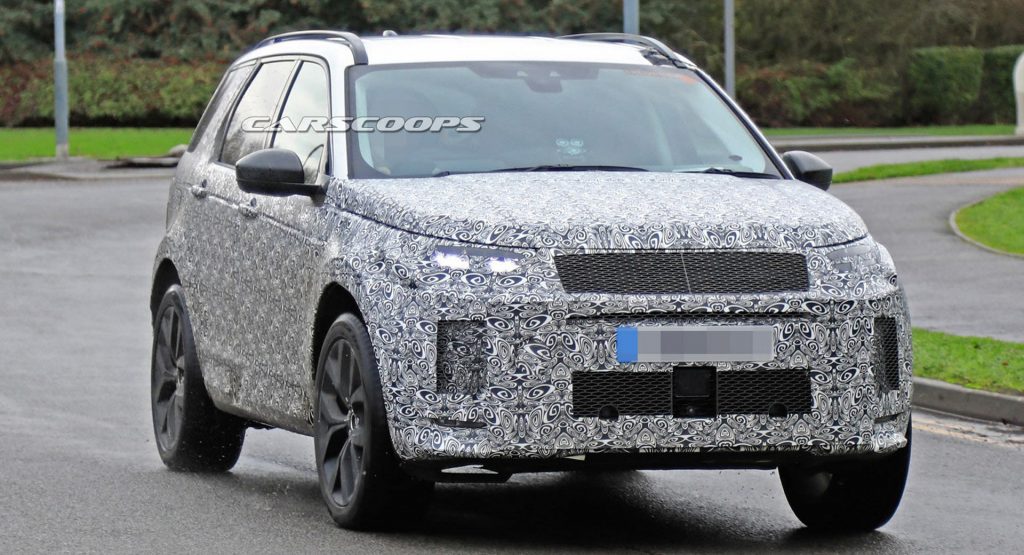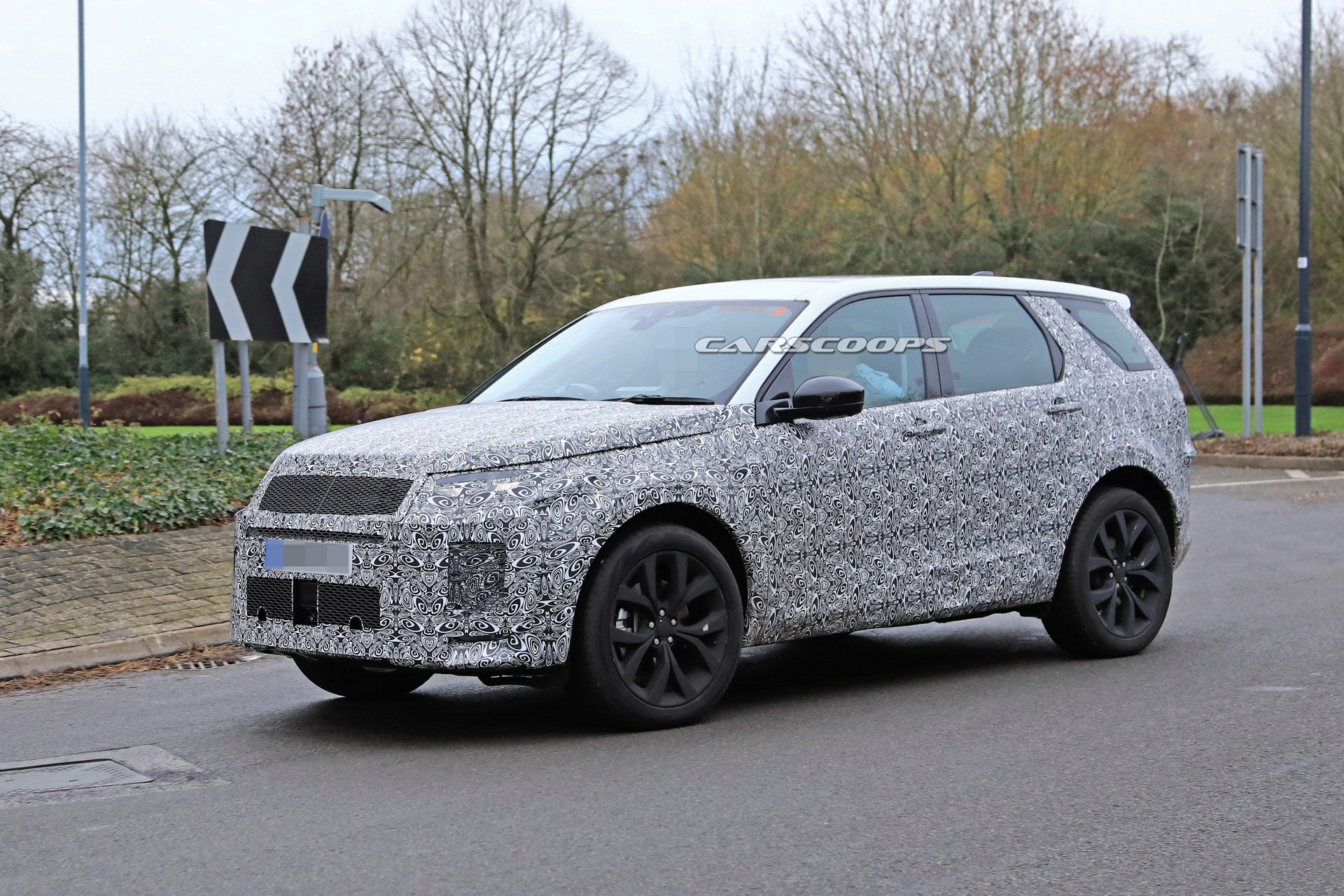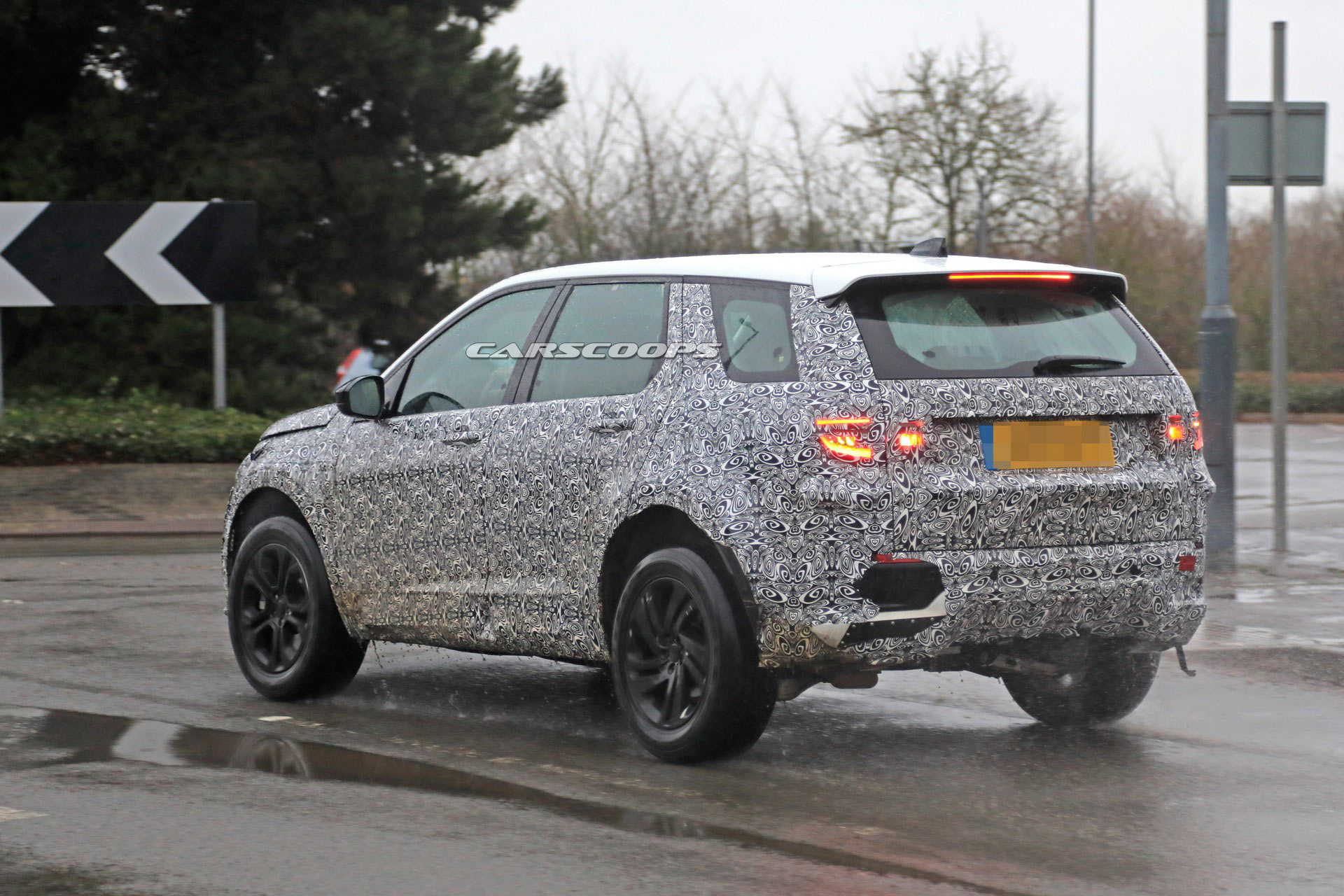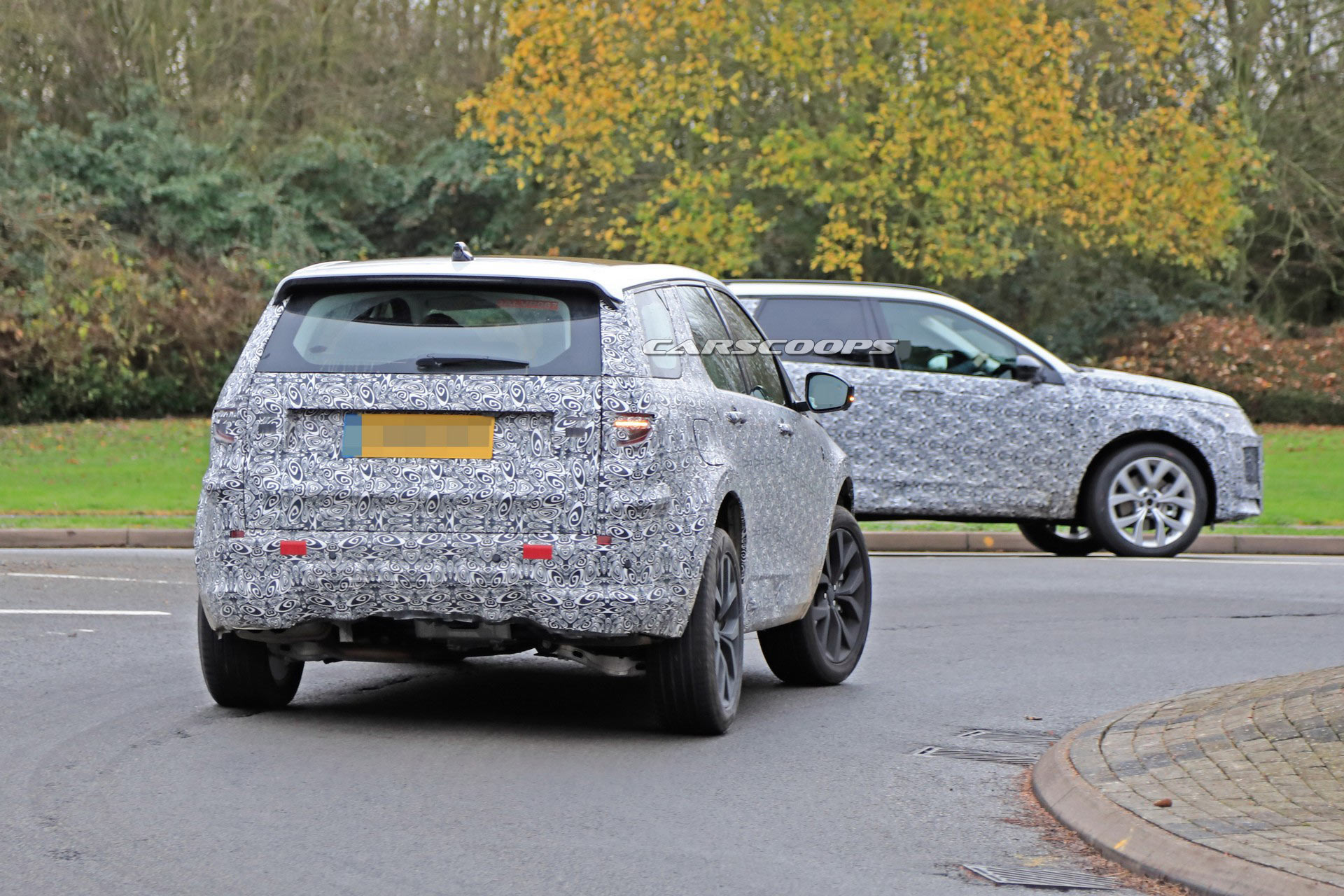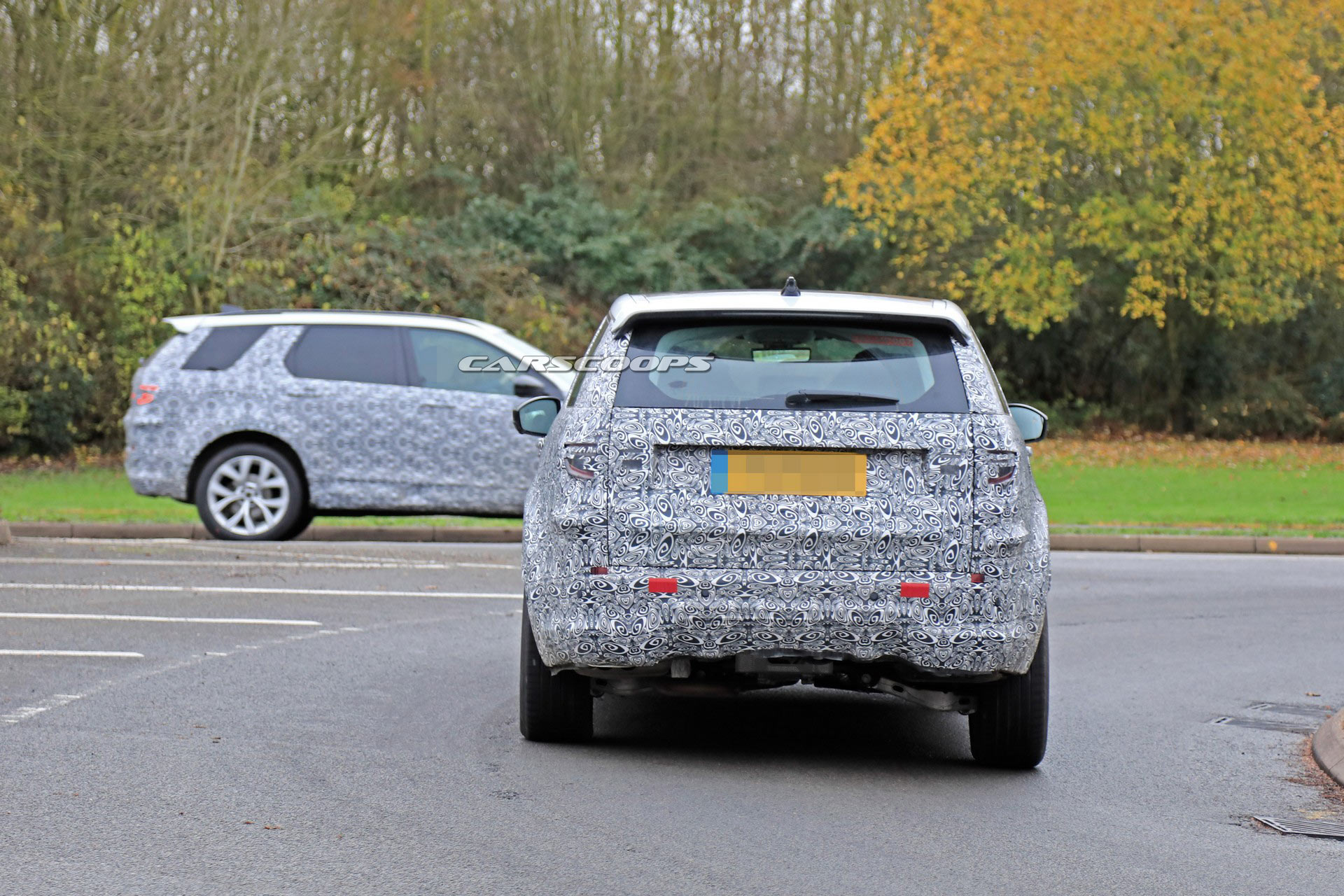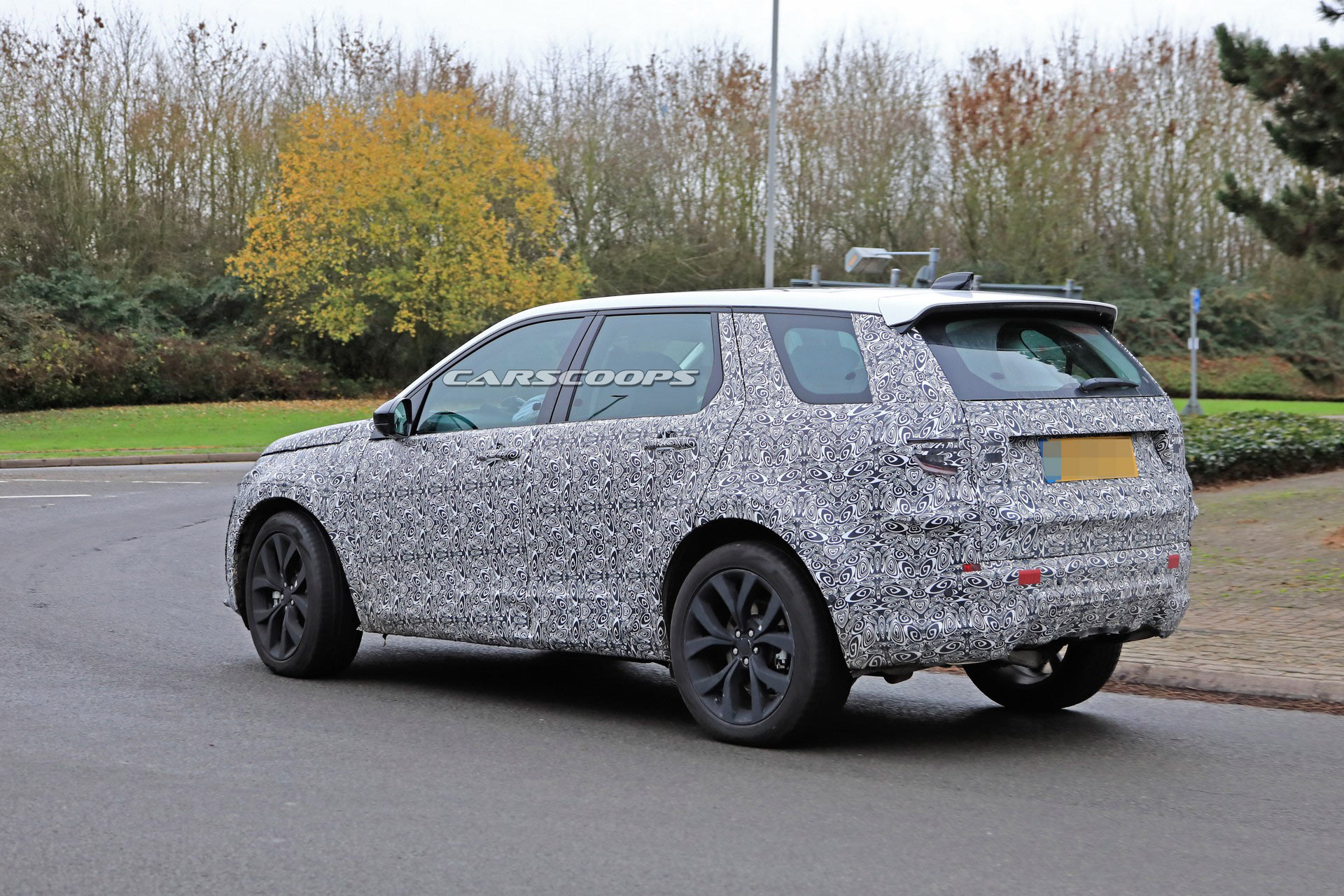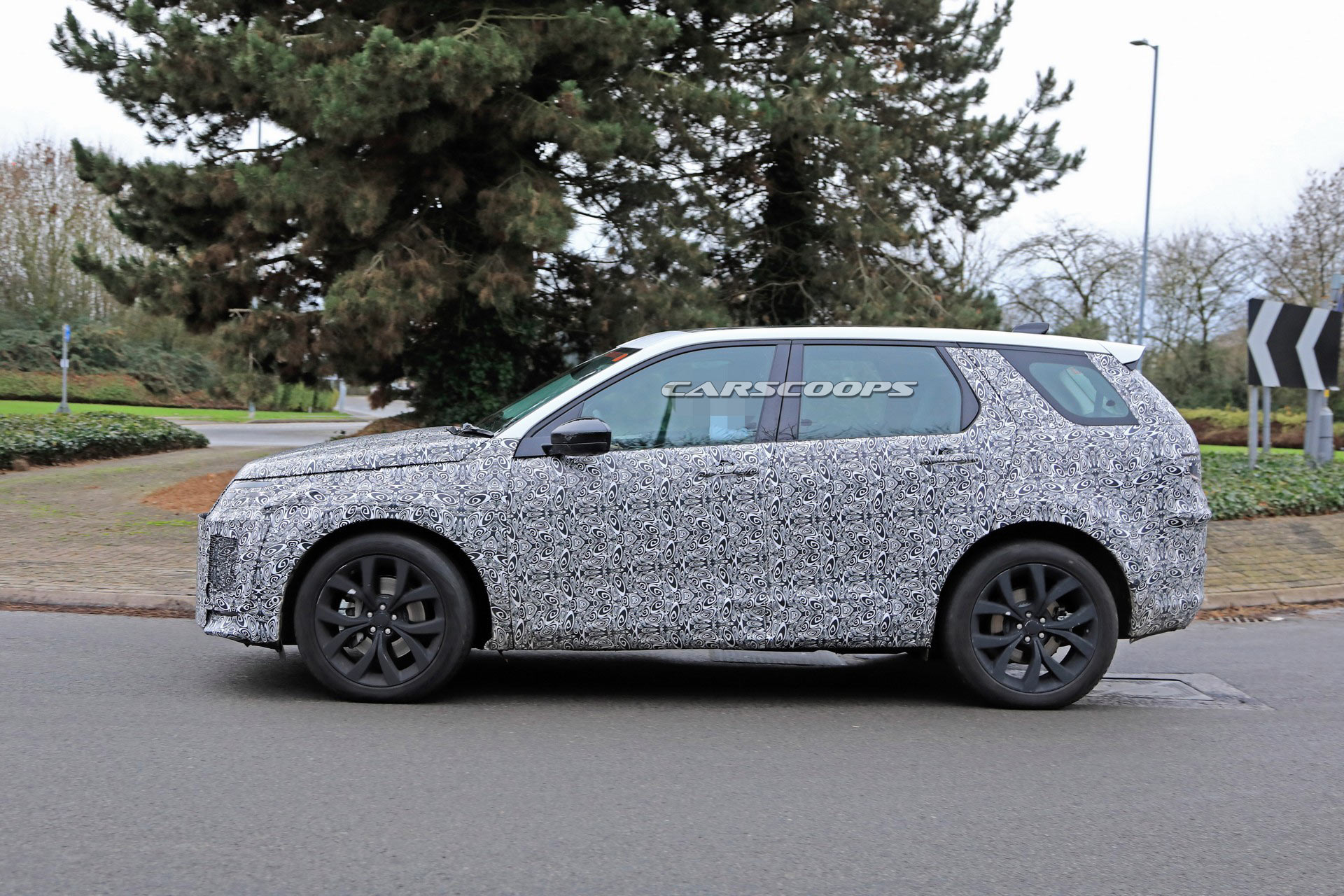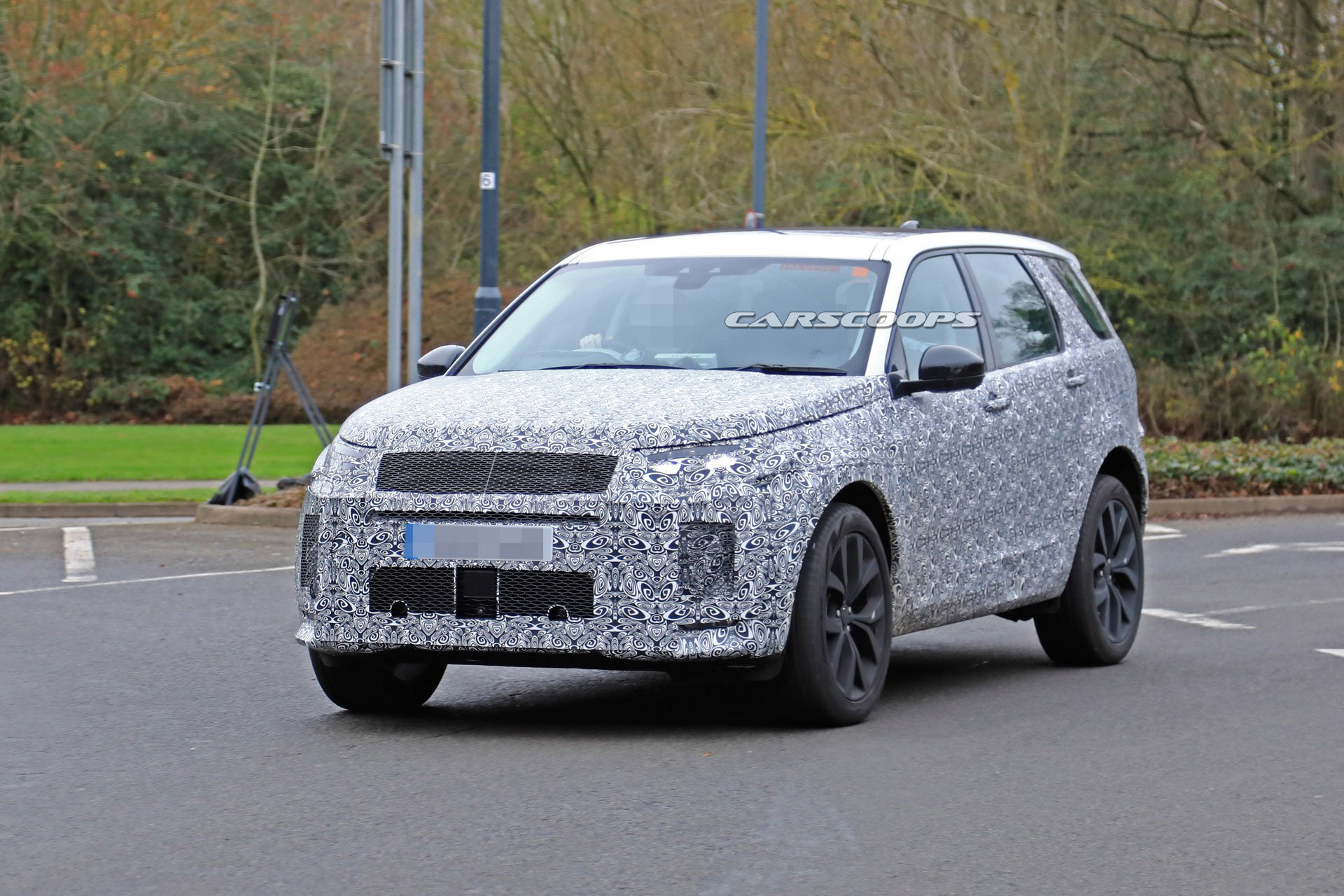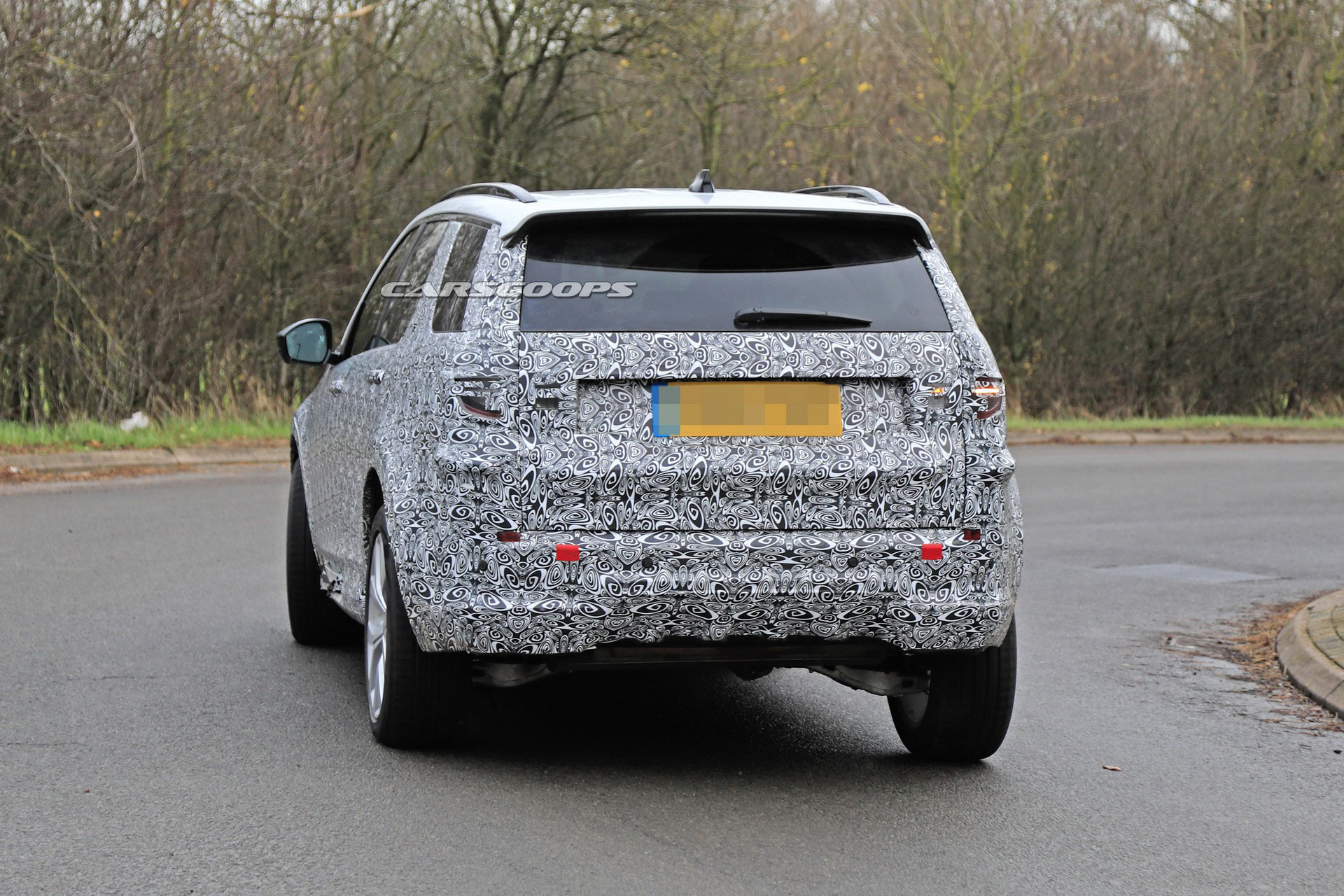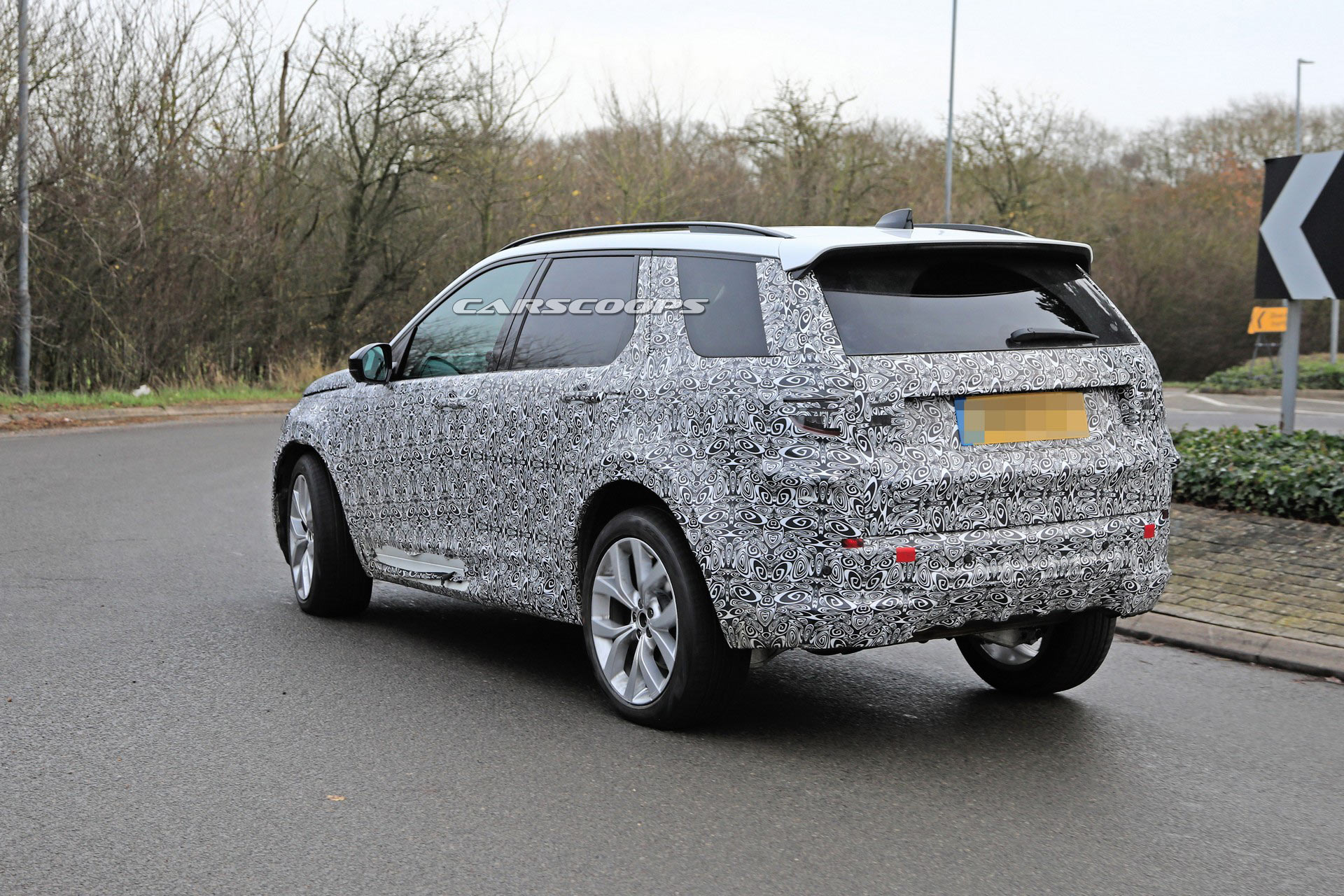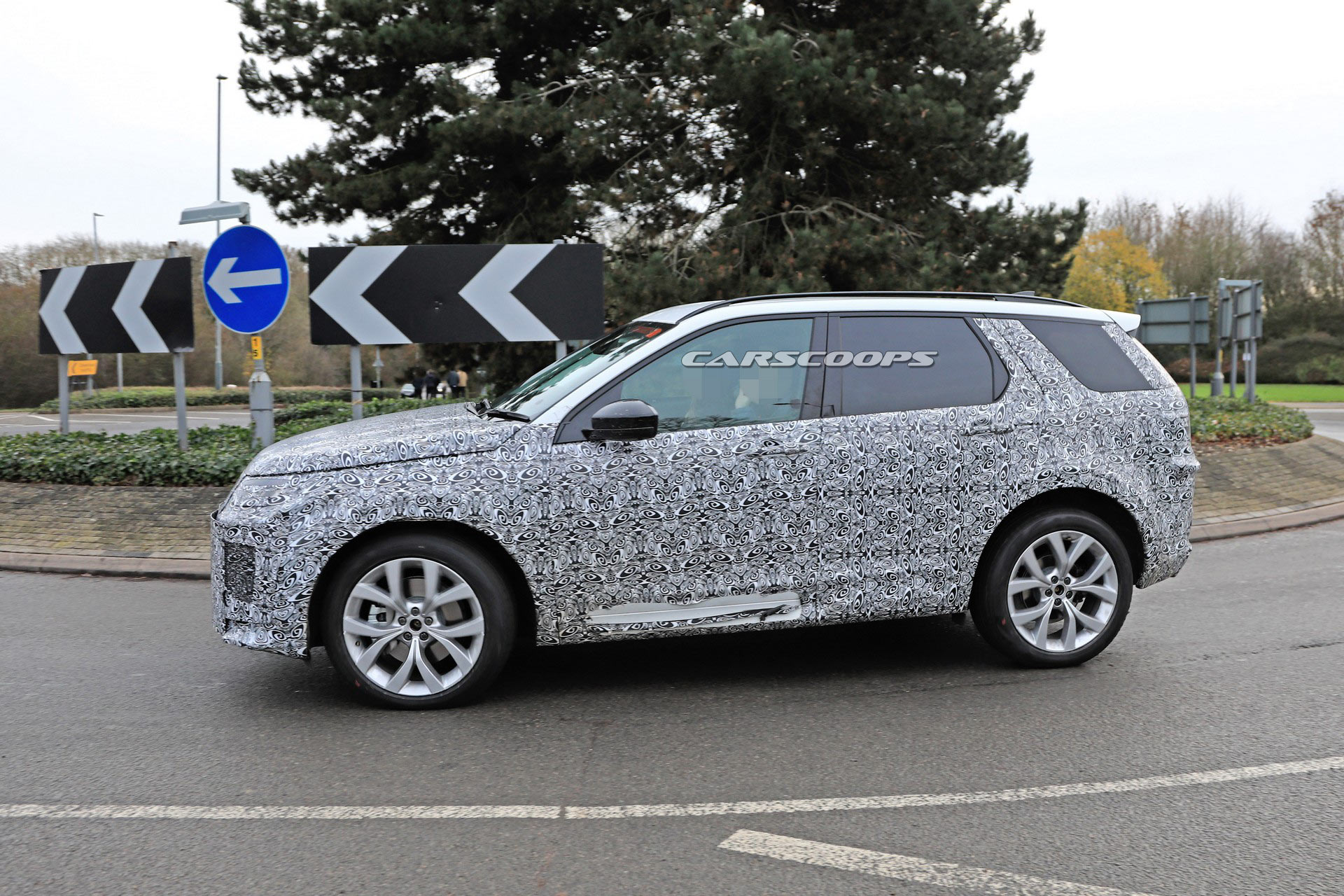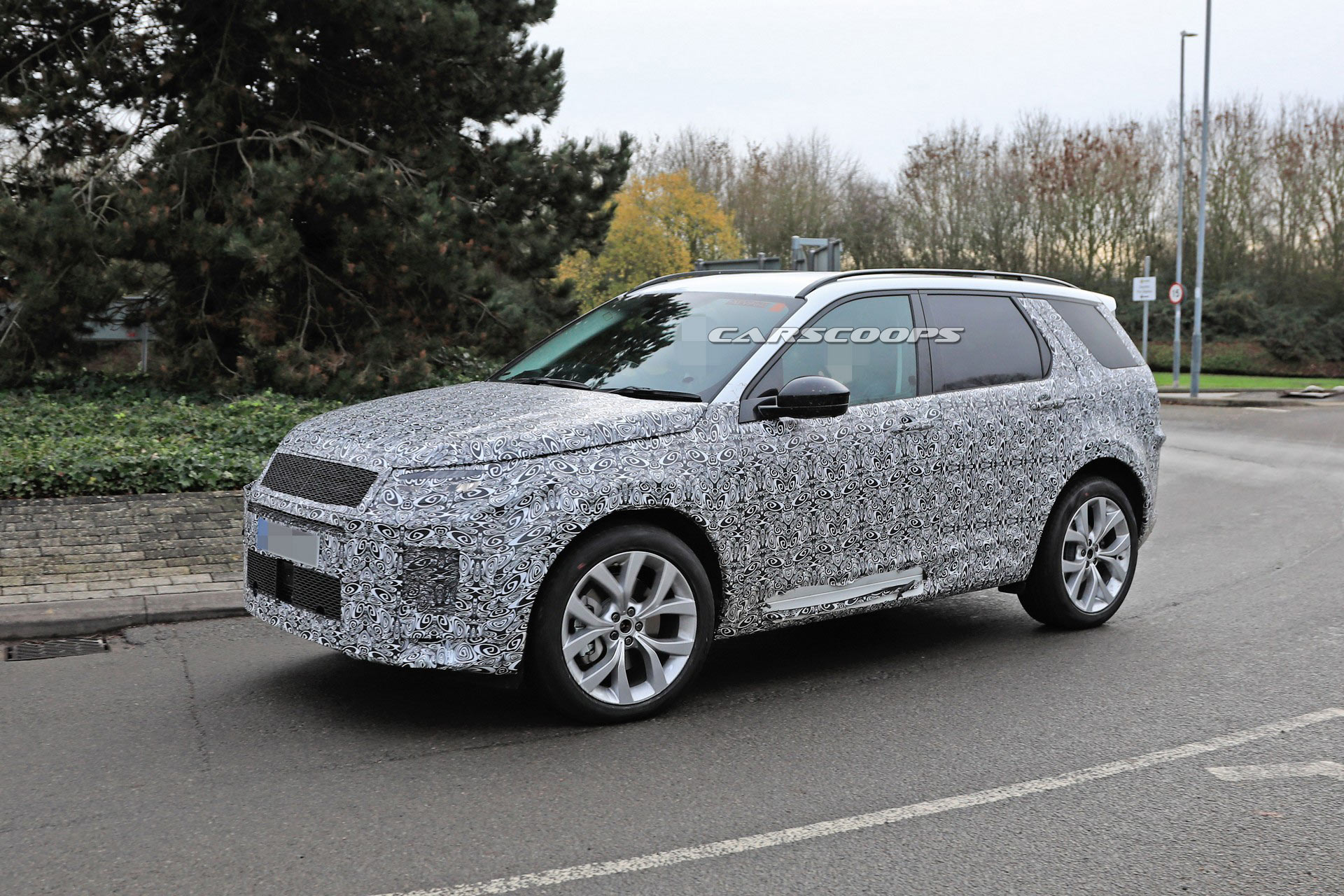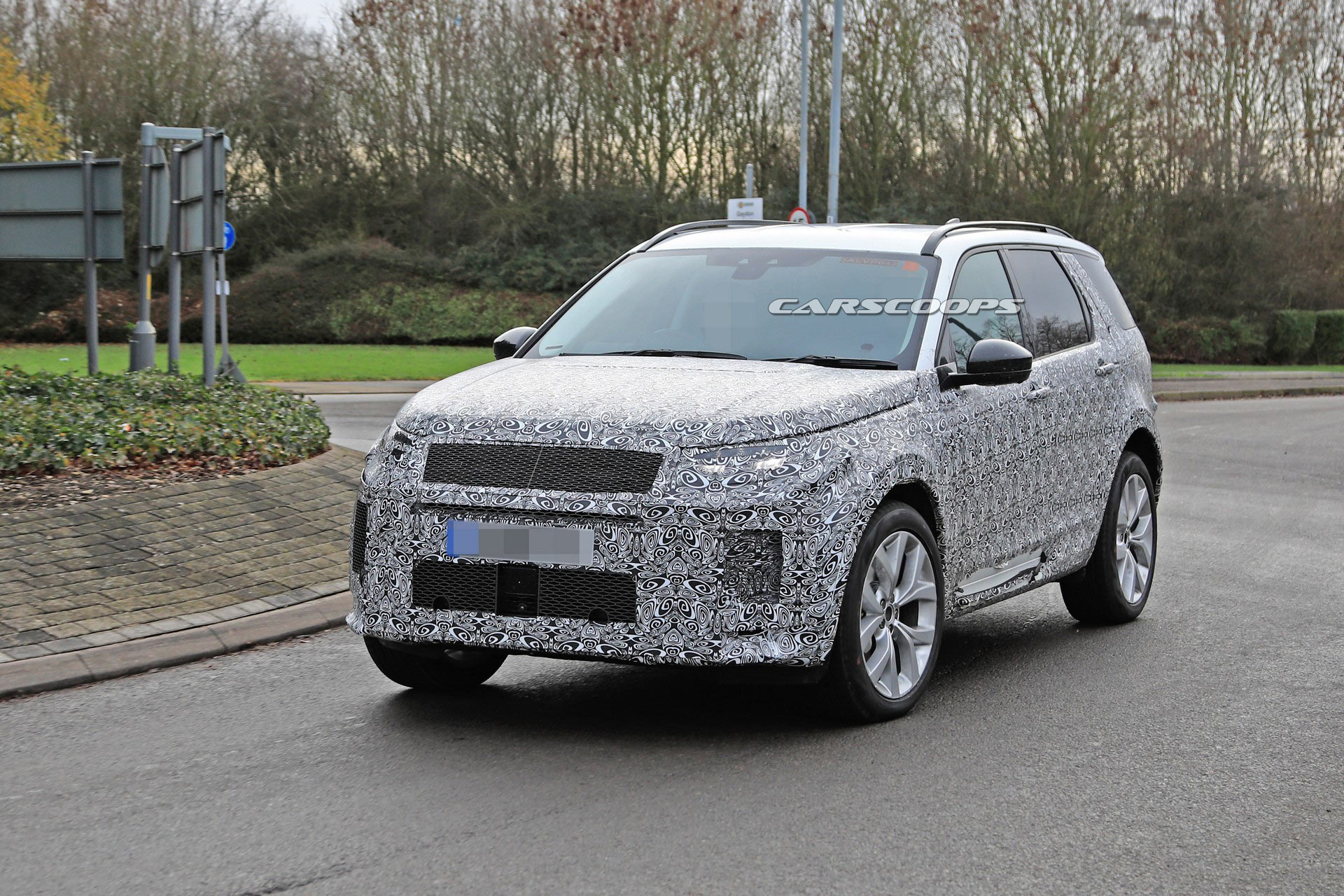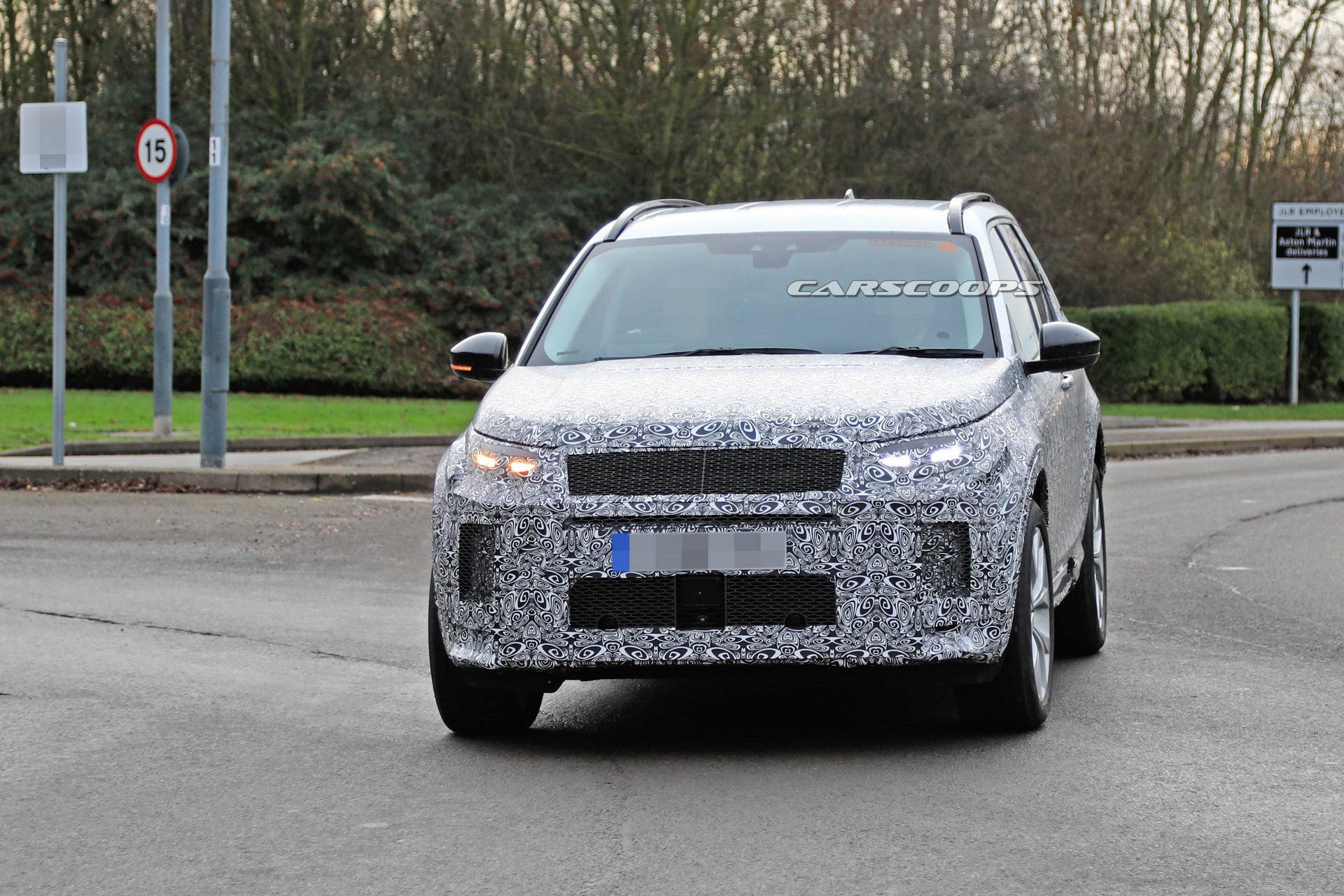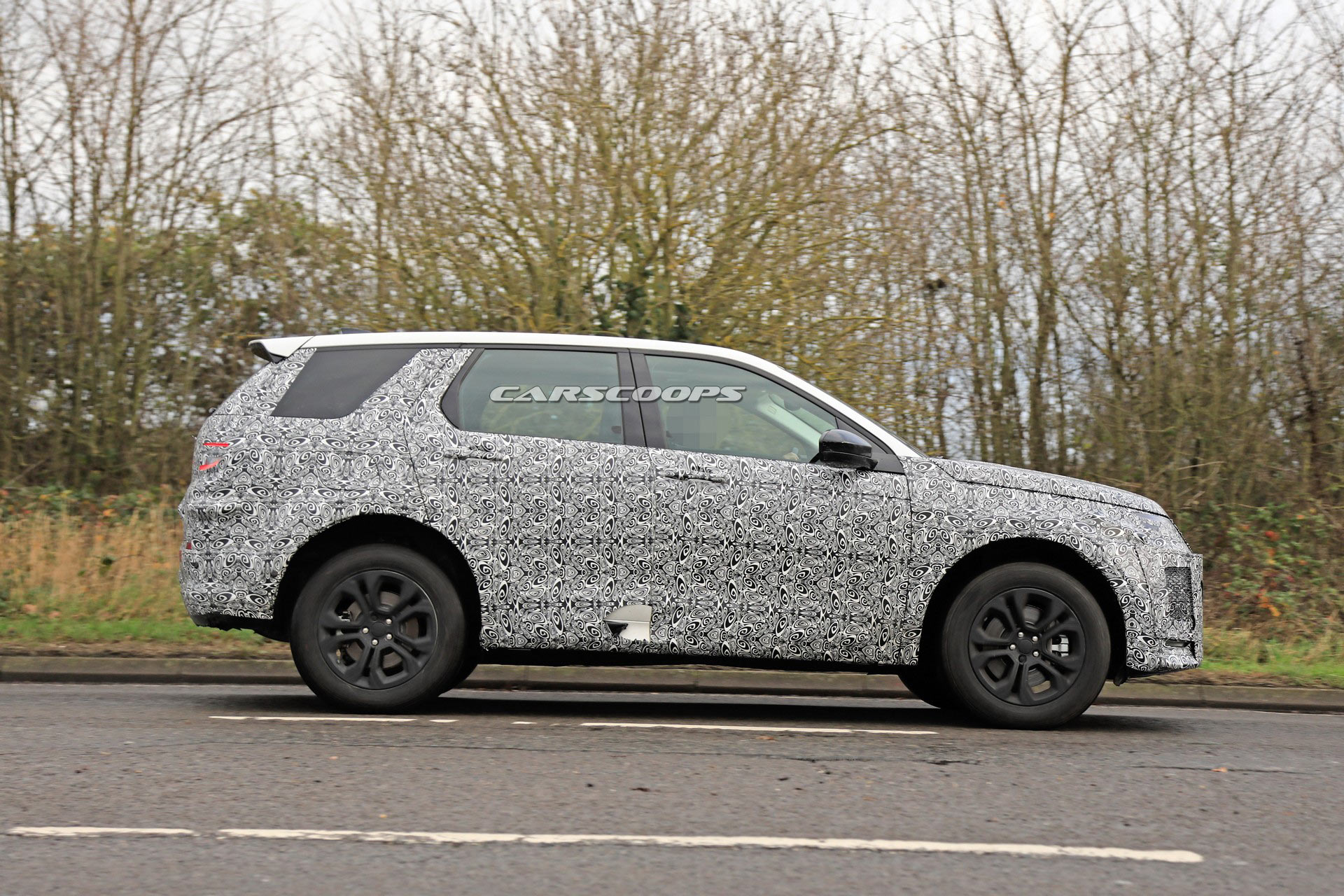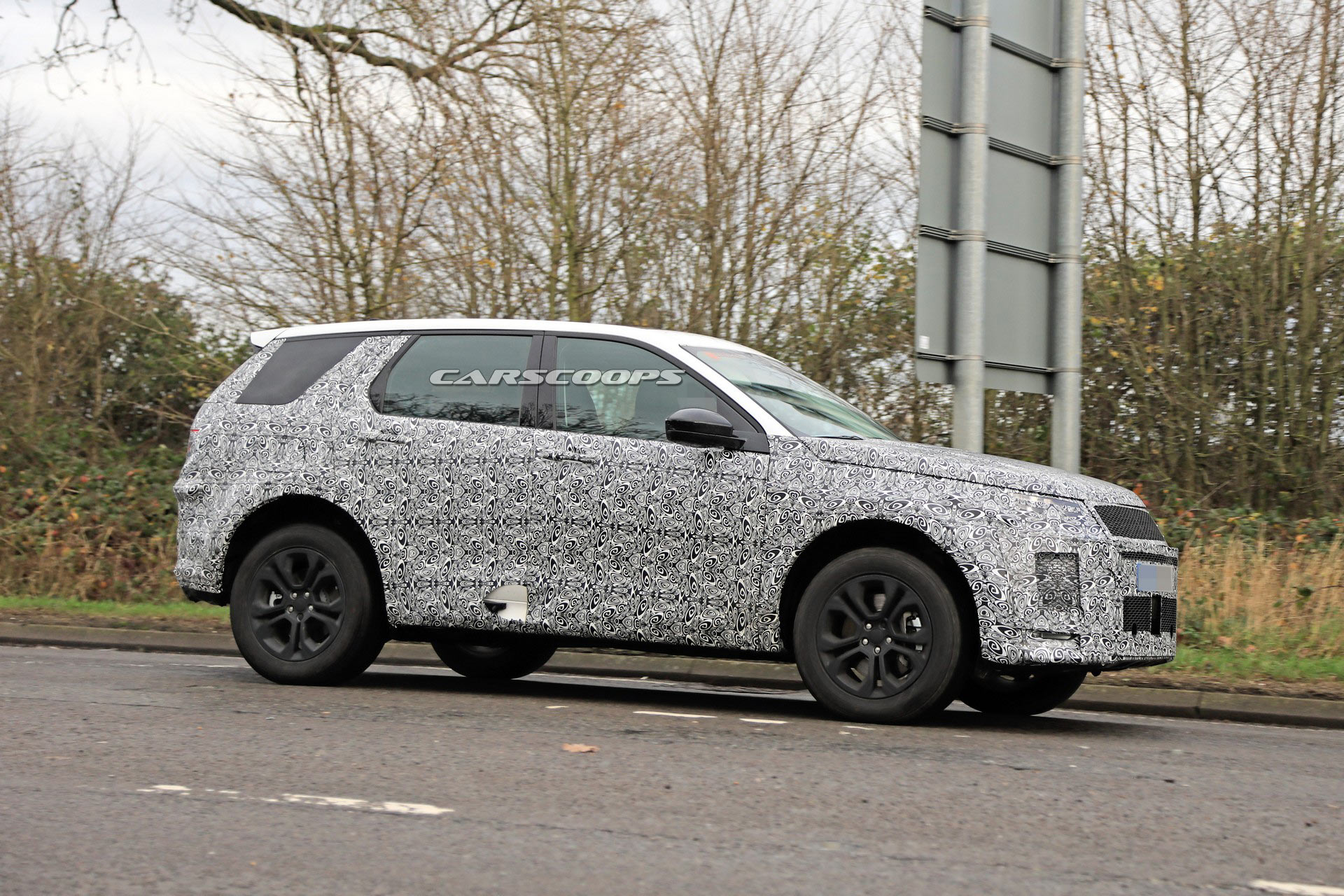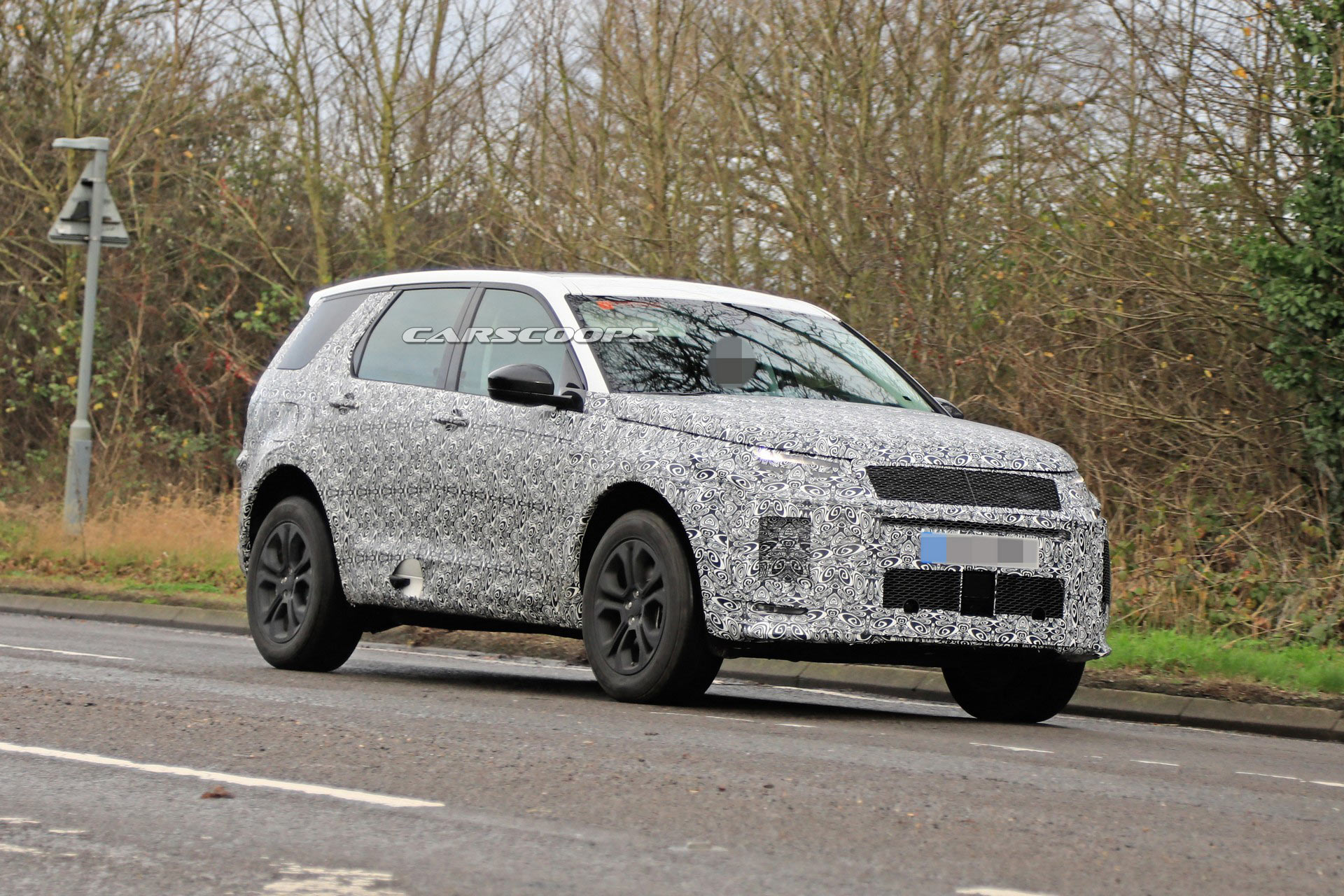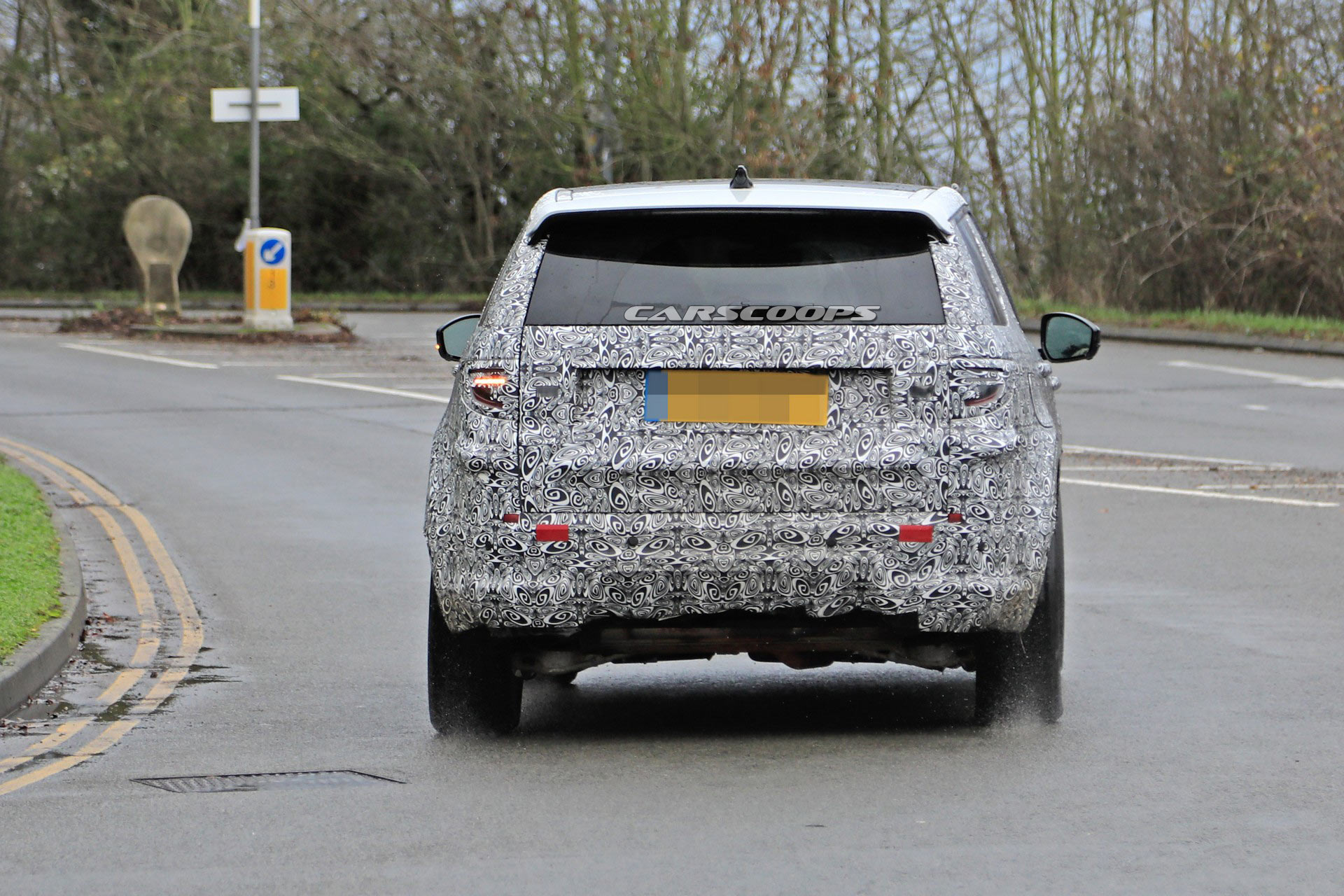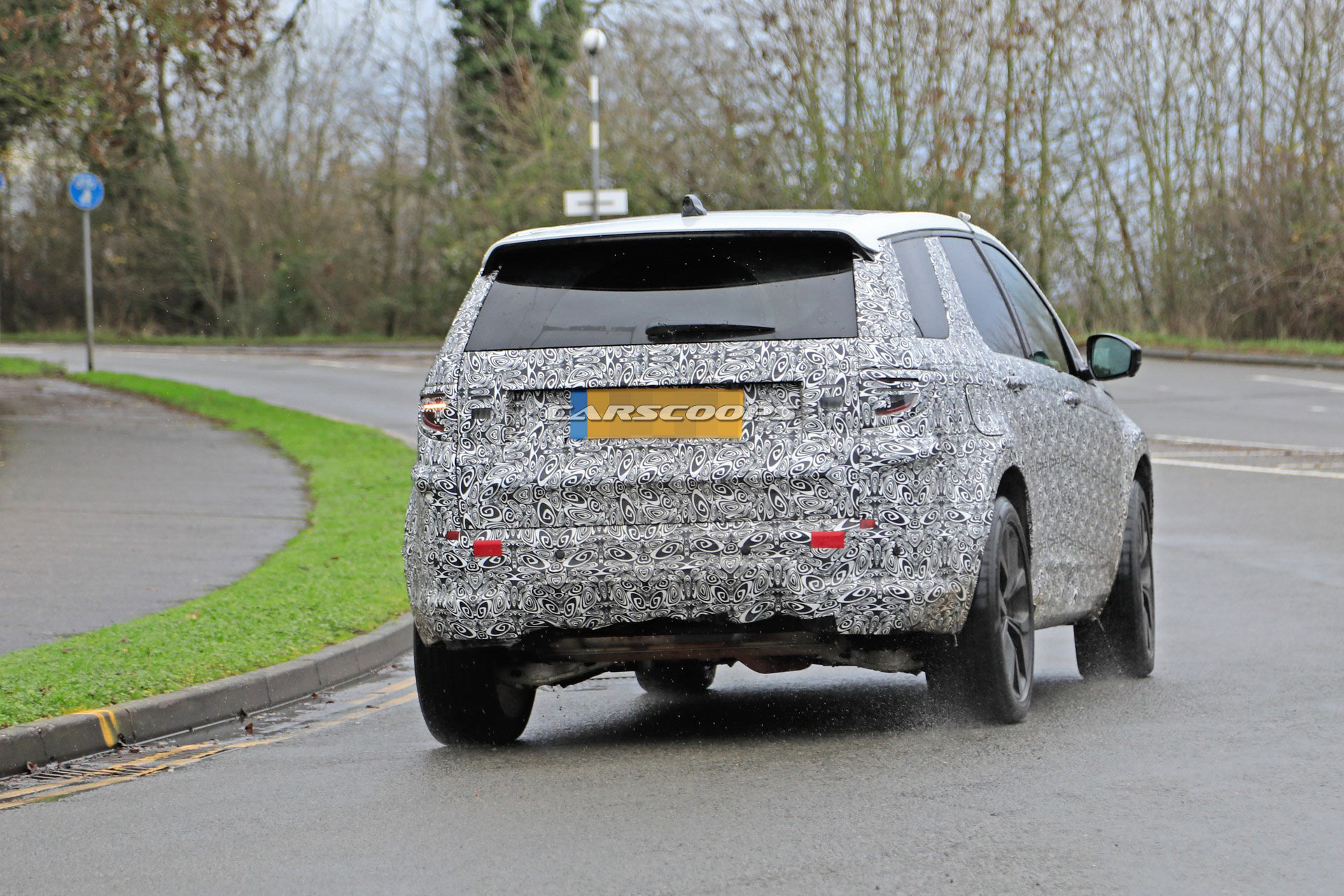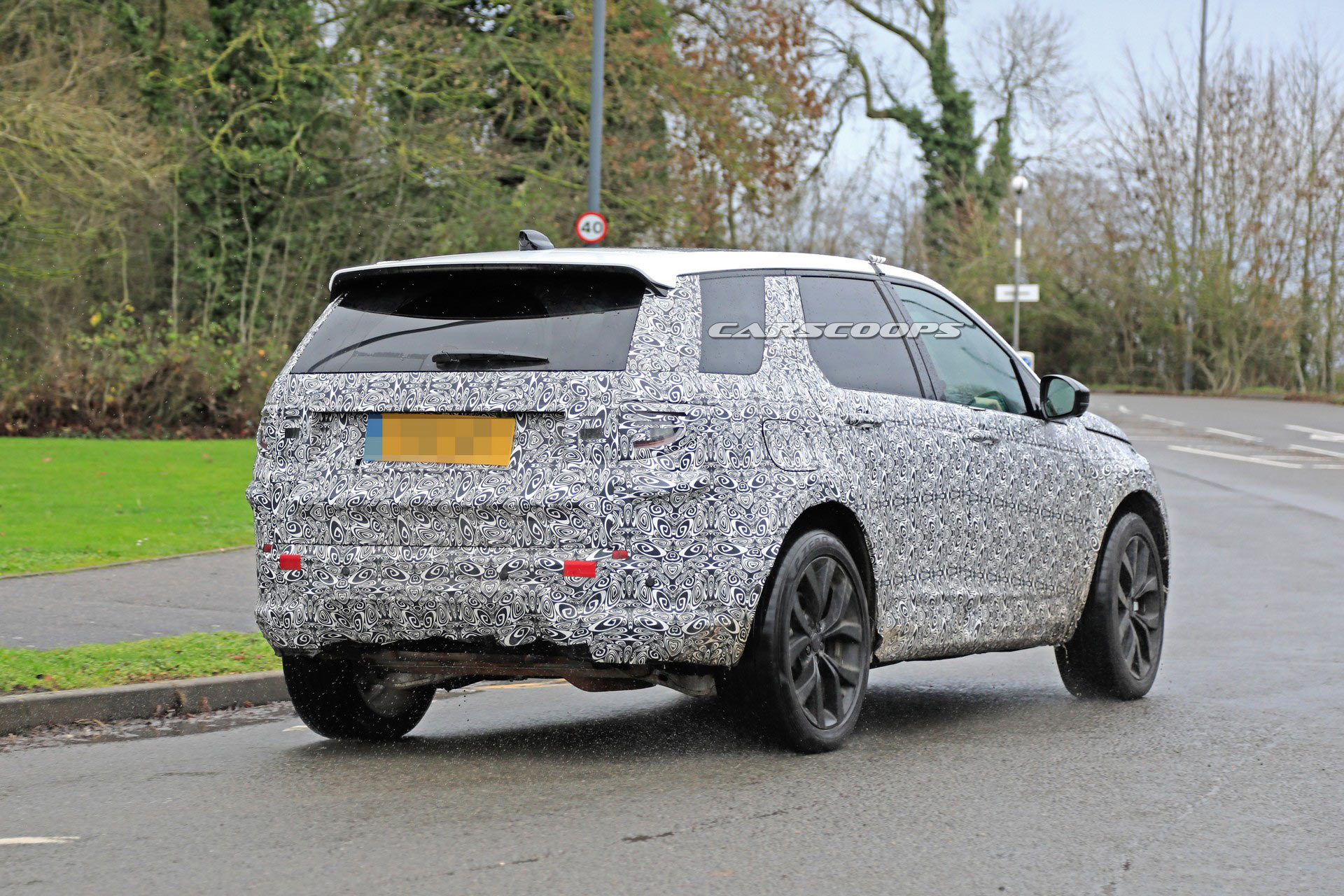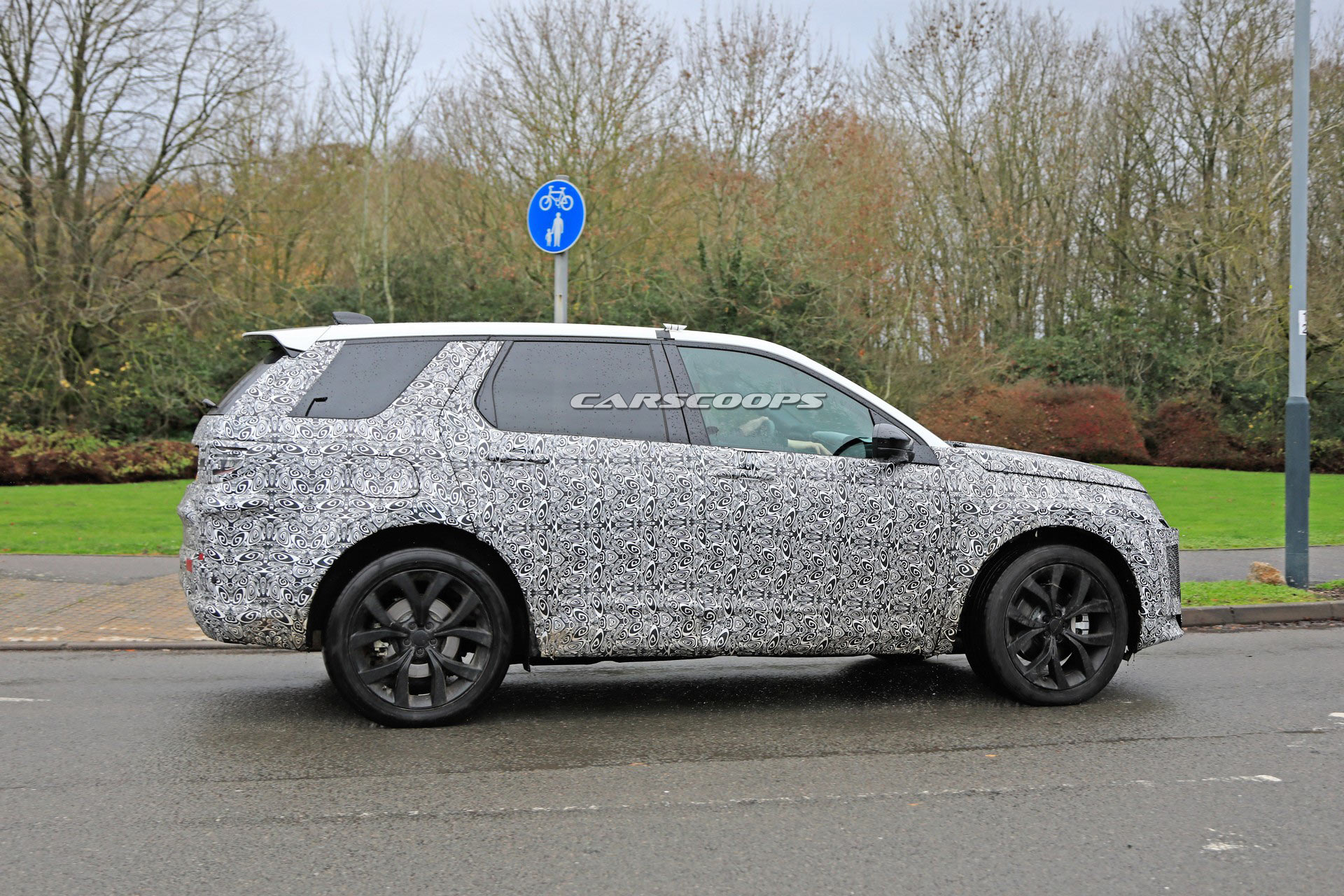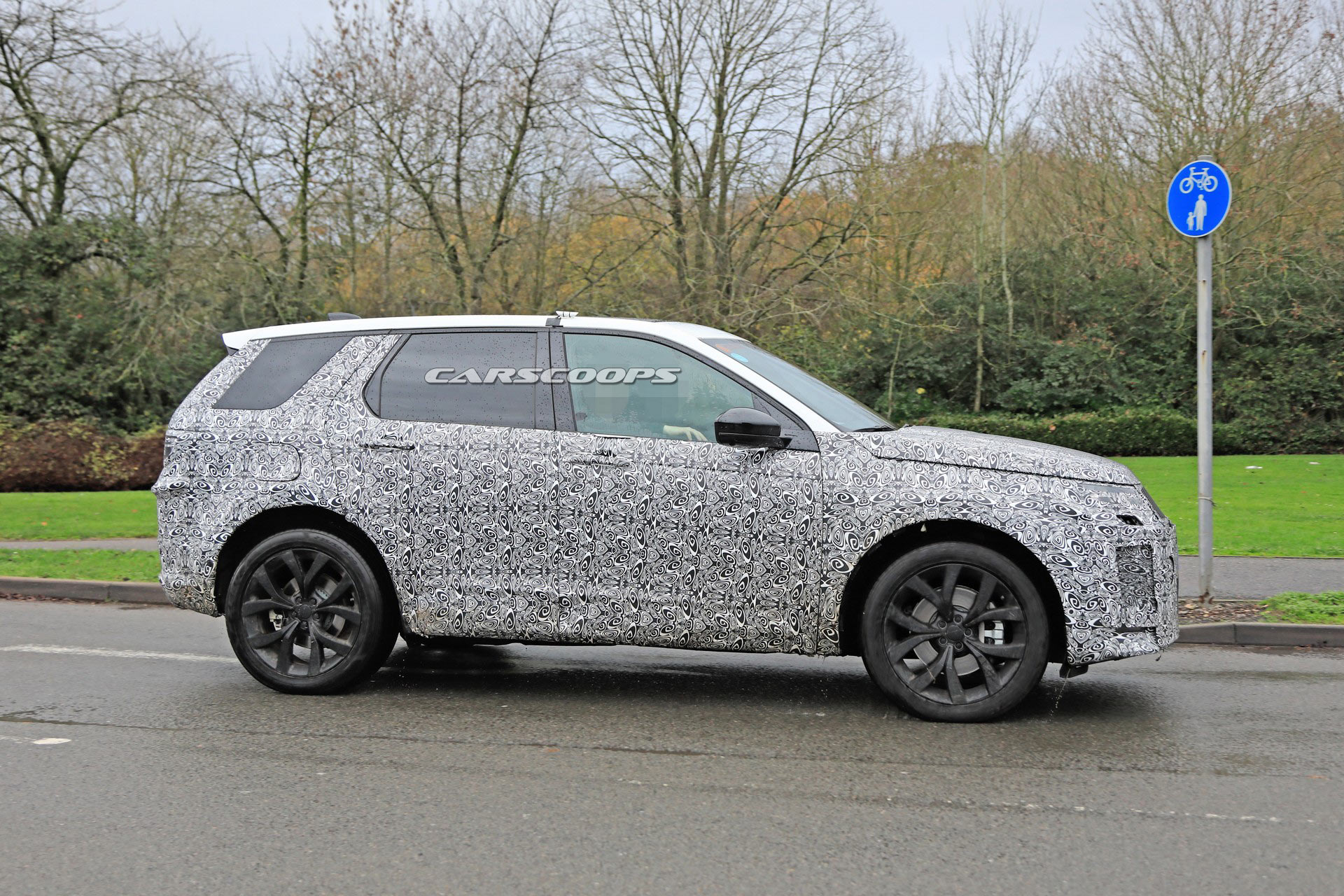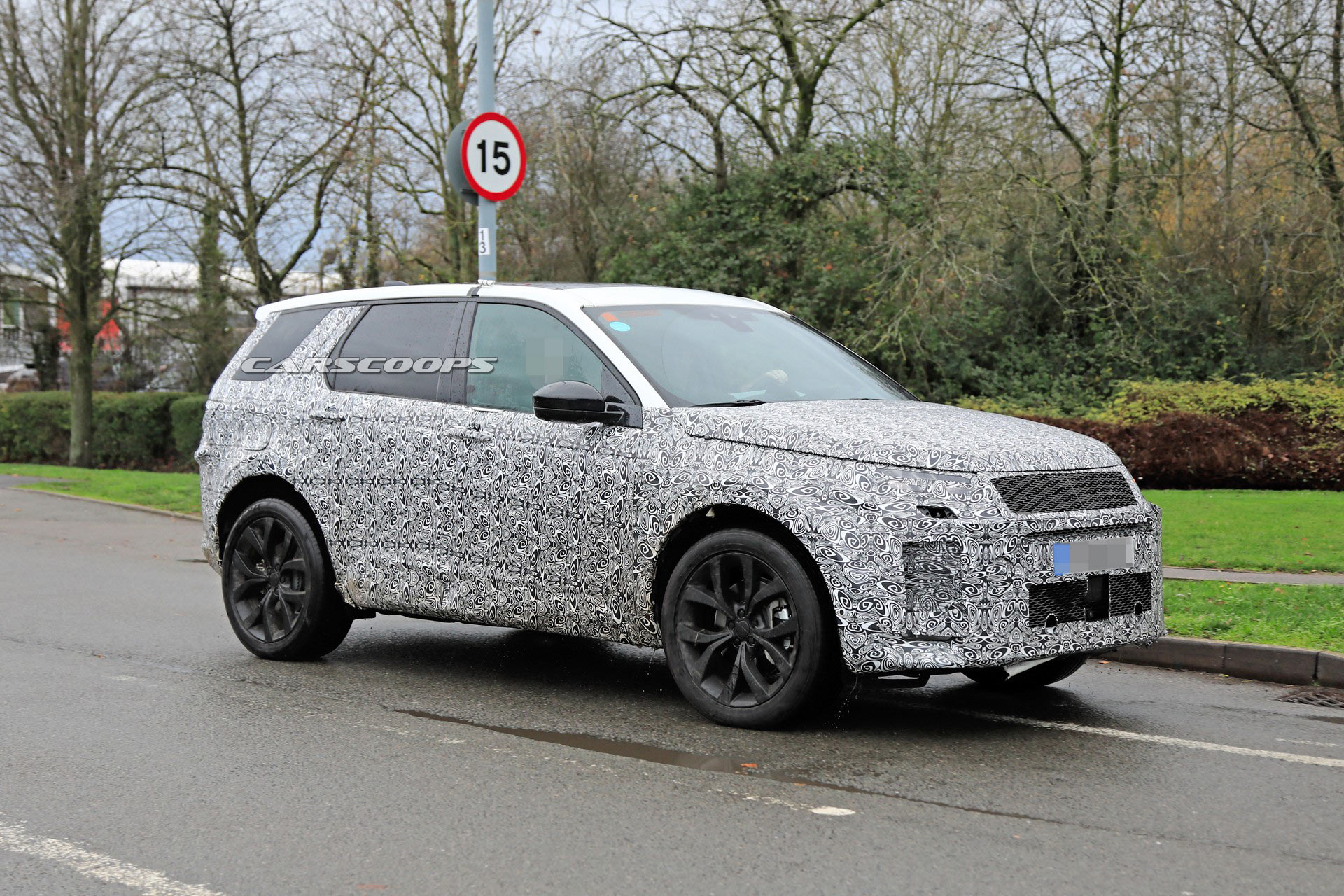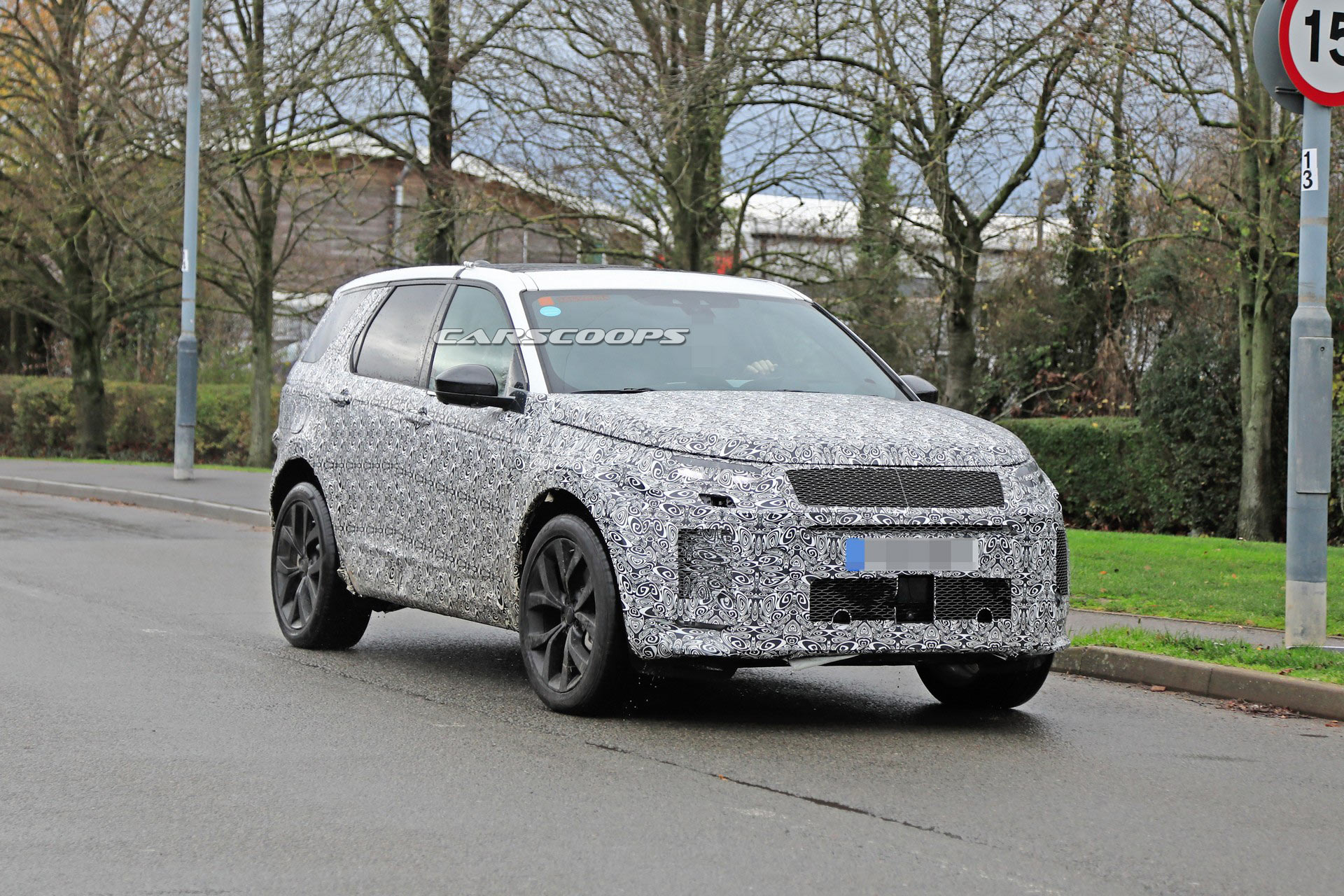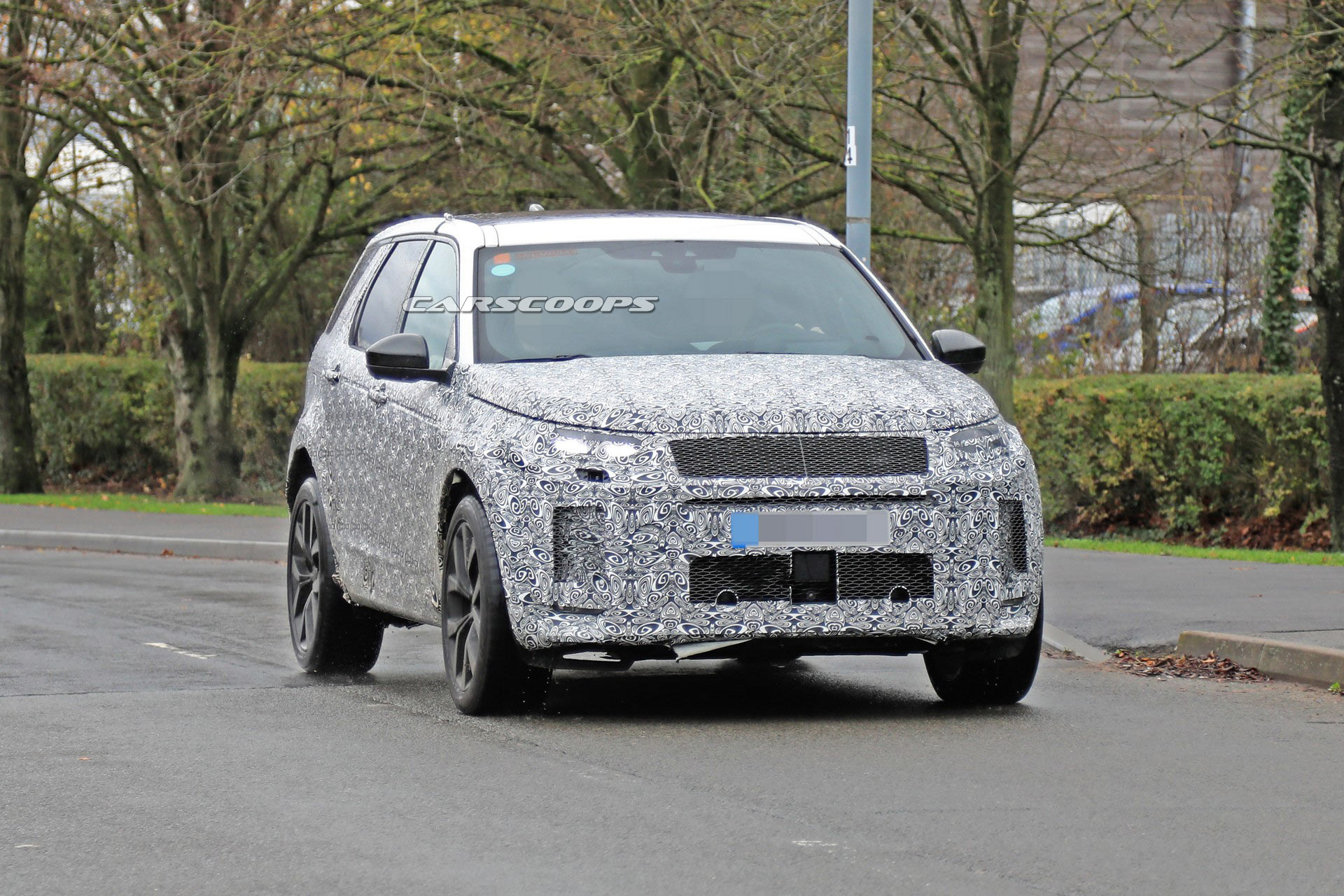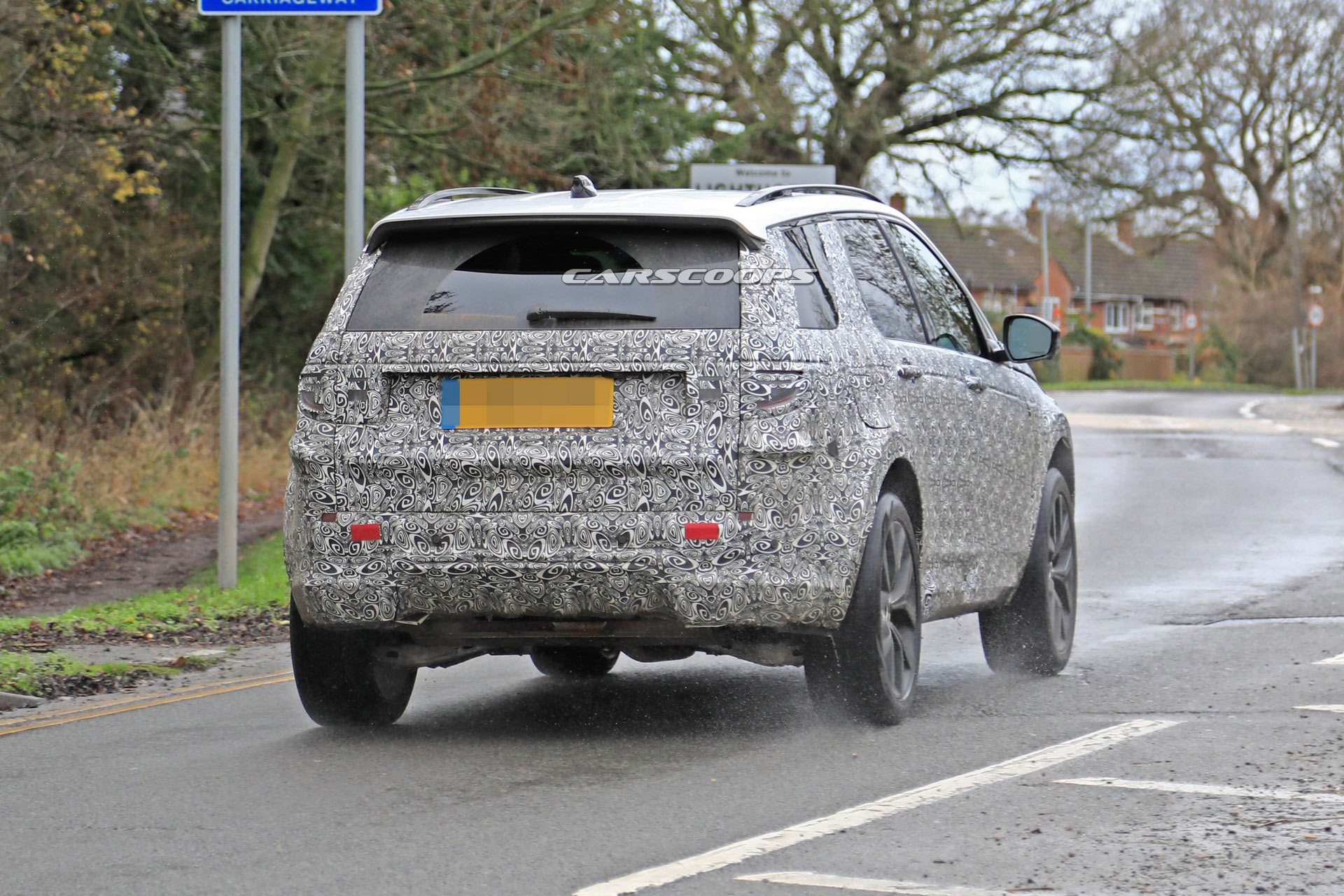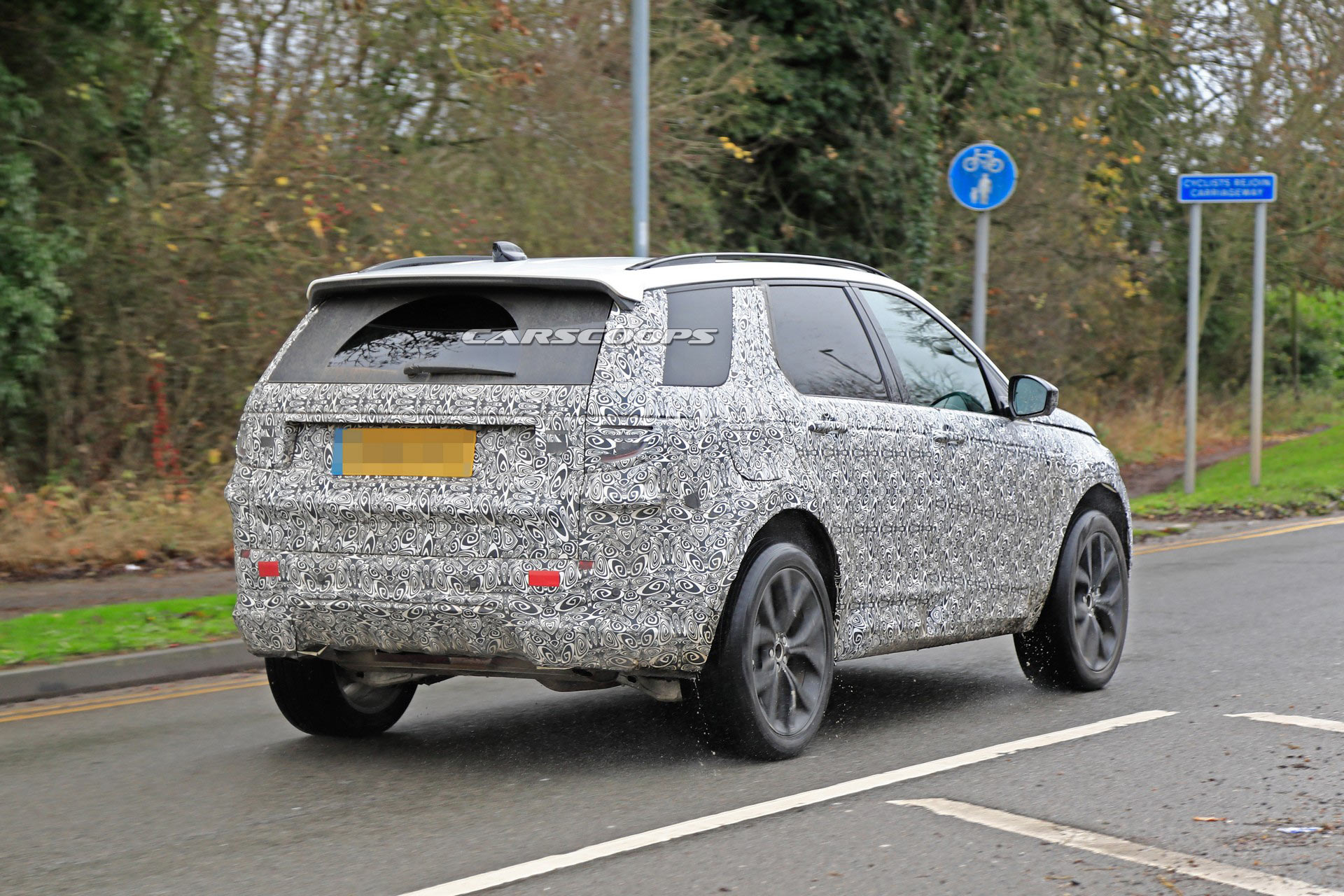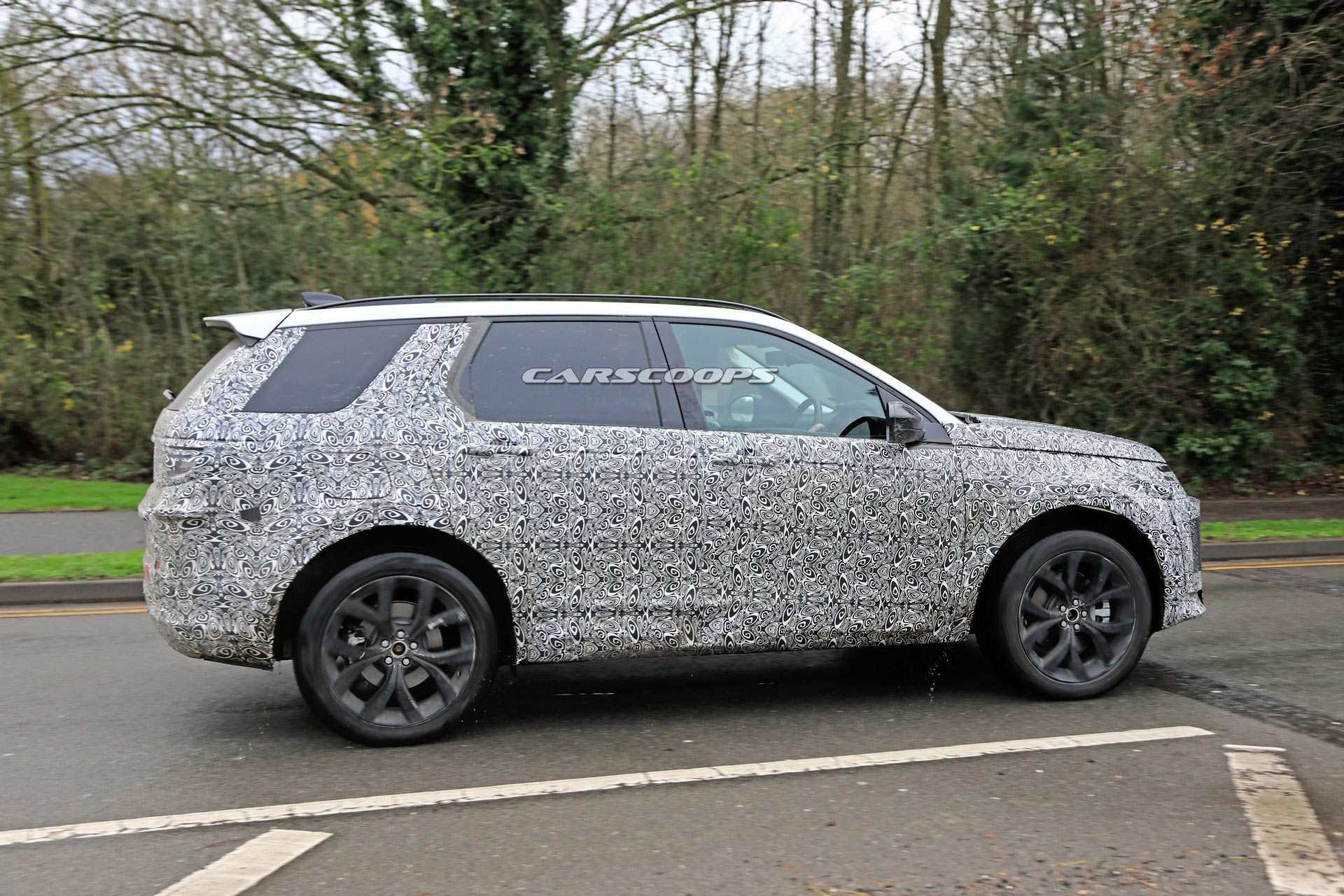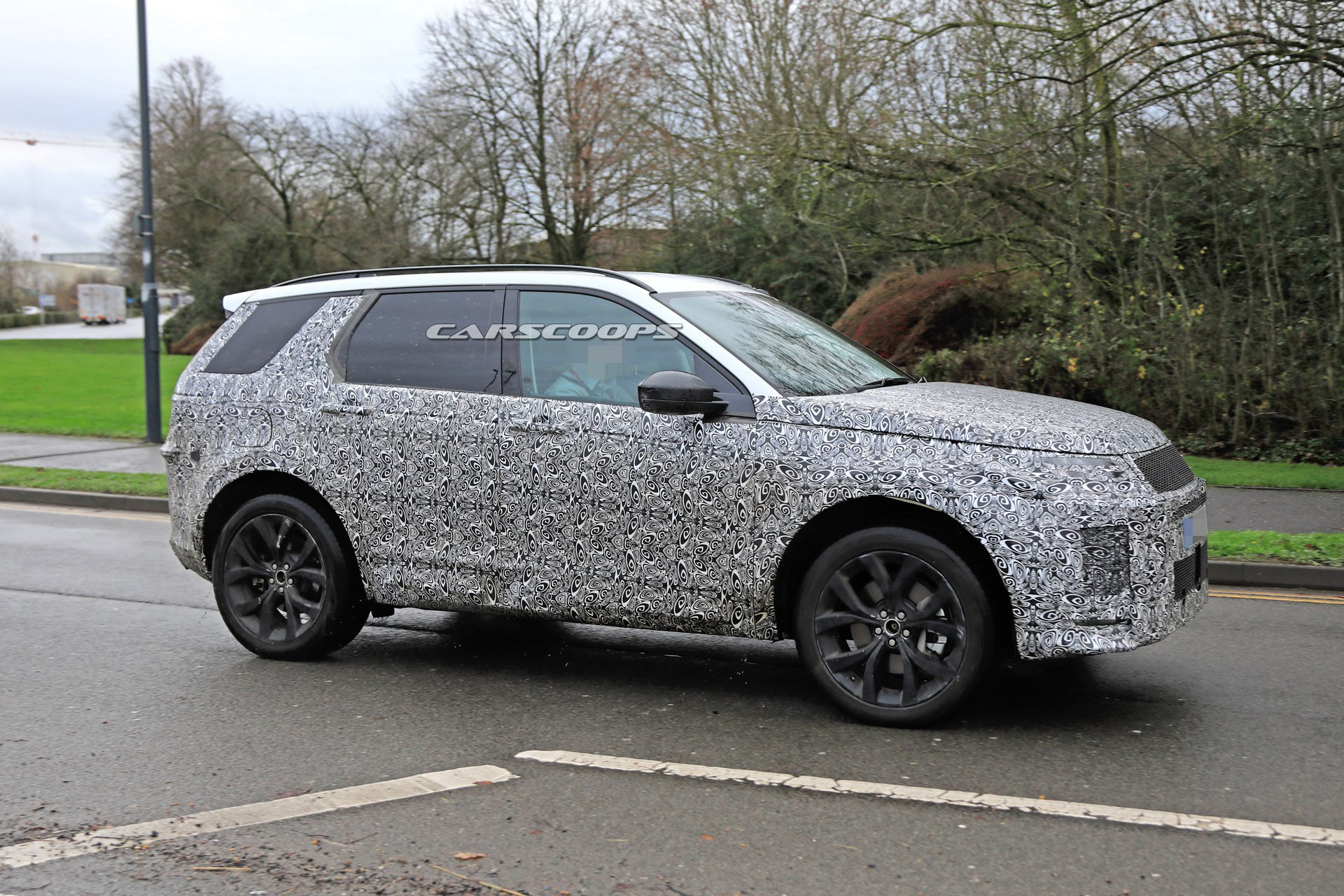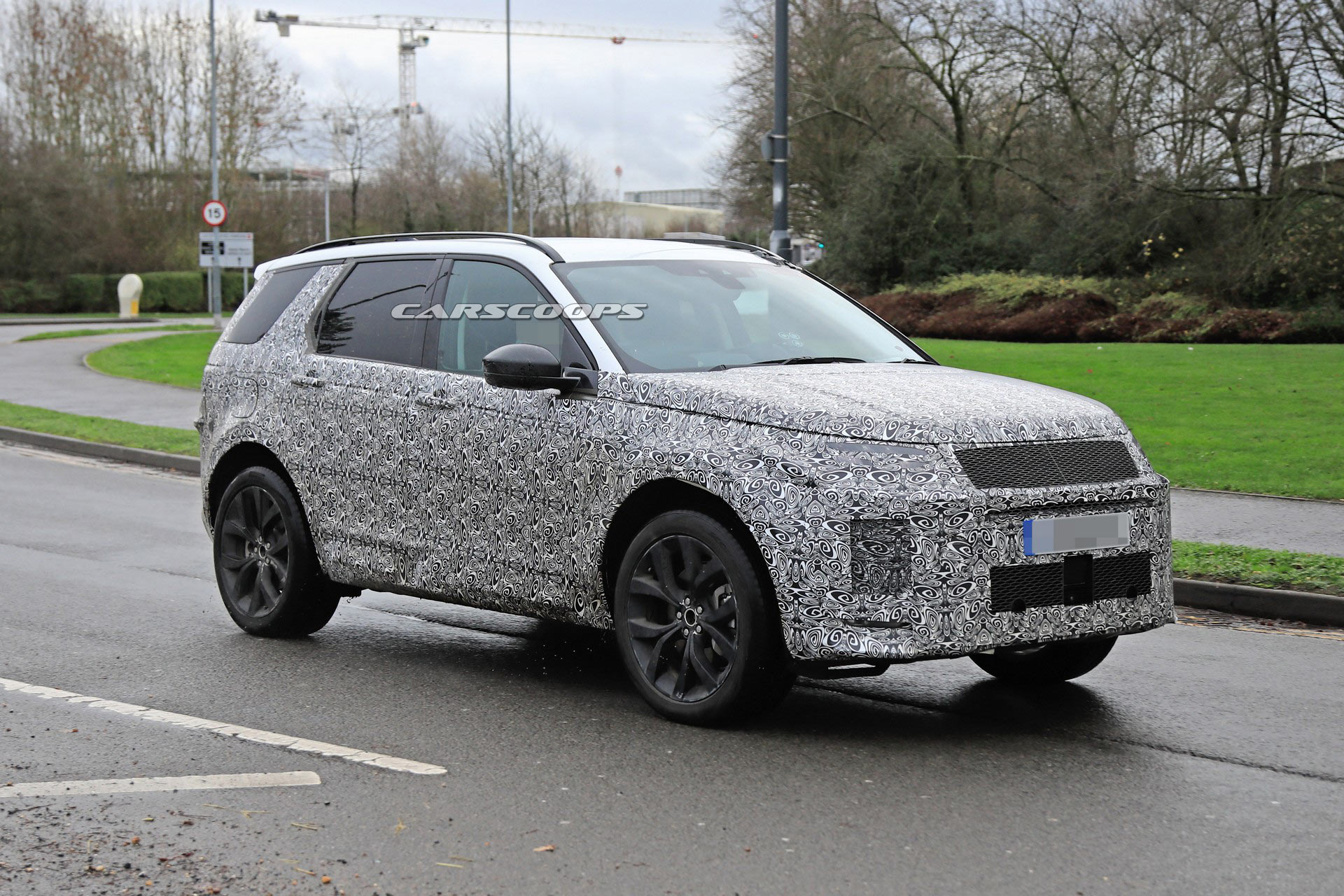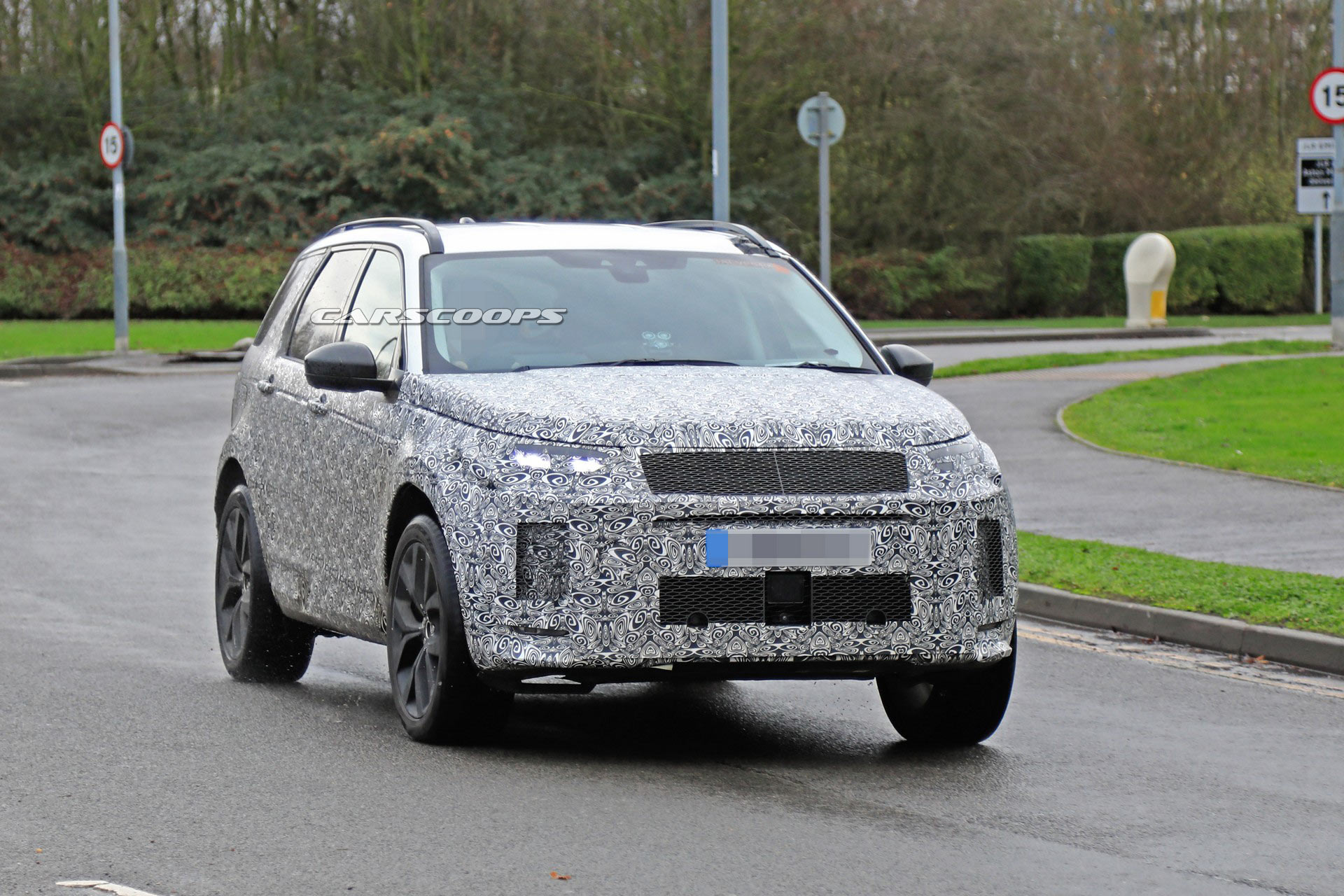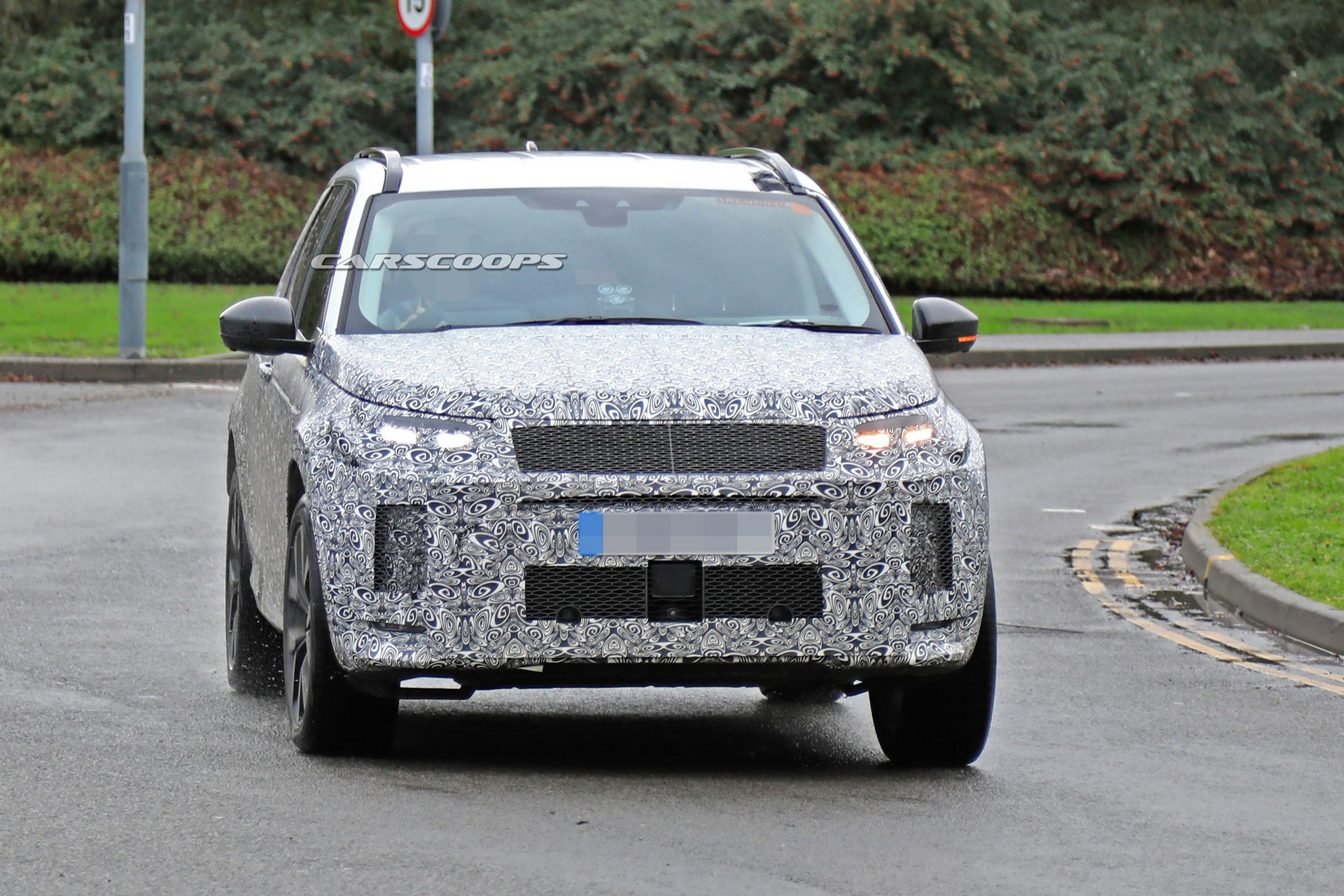Land Rover pulled the wraps off the 2020 Range Rover Evoque in November and it will soon be joined by an updated Discovery Sport.
Looking more aggressive than its predecessor, the updated model appears to adopt a revised grille which is flanked by restyled LED headlights. Further below, we can see an evolutionary front fascia which features reshaped air intakes and a more aerodynamic lower bumper.
While the profile remains largely the same, the rear of the crossover has been equipped with modestly revised taillights. The rear bumper features an evolutionary design, but the skid plate has apparently been replaced by a diffuser to improve aerodynamics.
Spy photographers didn’t get close enough to peek inside the cabin, but we can expect some major updates inside. Among the likely changes are a digital instrument cluster and a Touch Pro Duo system with two touchscreen displays. Designers may also install higher quality materials and a new steering wheel – among other things.
Like the Evoque, the 2020 Discovery Sport is expected to ride on the Premium Transverse Architecture which has been developed with electrification in mind. As a result, the model will feature 48-volt mild-hybrid technology which promises to improve fuel economy while also reducing emissions.
Engine options will likely echo the Evoque and include an entry-level four-cylinder diesel that produces 148 hp (110 kW / 150 PS) and 280 lb-ft (380 Nm) of torque. There could also be two other diesel engines which produce 177 hp (132 kW / 180 PS) and 317 lb-ft (430 Nm) of torque as well as 236 hp (177 kW / 240 PS) and 369 lb-ft (500 Nm) of torque.
On the petrol side, there could be three different four-cylinders including a base unit with 198 hp (147 kW / 200 PS) and 251 lb-ft (340 Nm) of torque. There should also be more powerful engines developing 245 hp (183 kW / 249 PS) and 269 lb-ft (365 Nm) of torque as well as 296 hp (221 kW / 300 PS) and 295 lb-ft (400 Nm) of torque.
Later down the road, we can expect a plug-in hybrid variant as well as a three-cylinder petrol engine.




